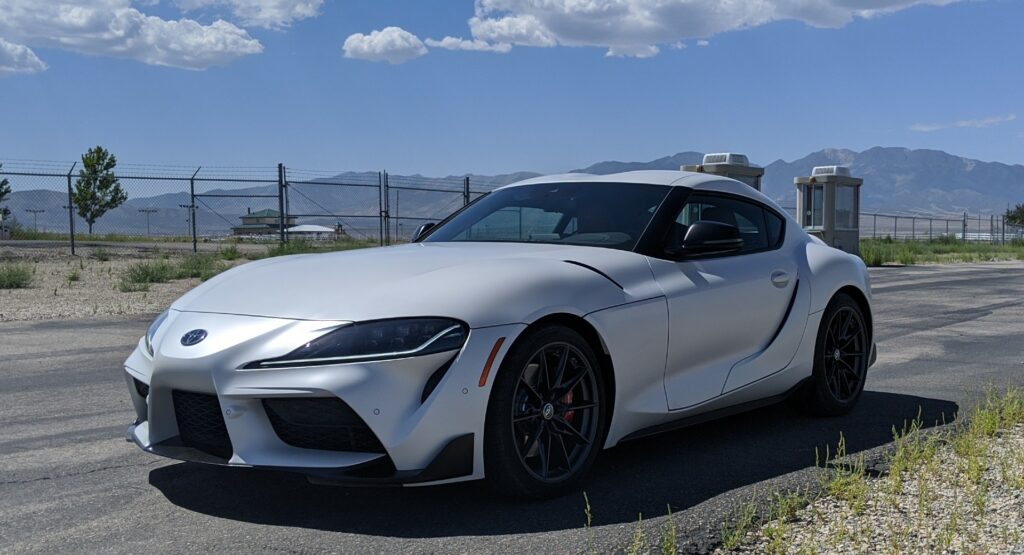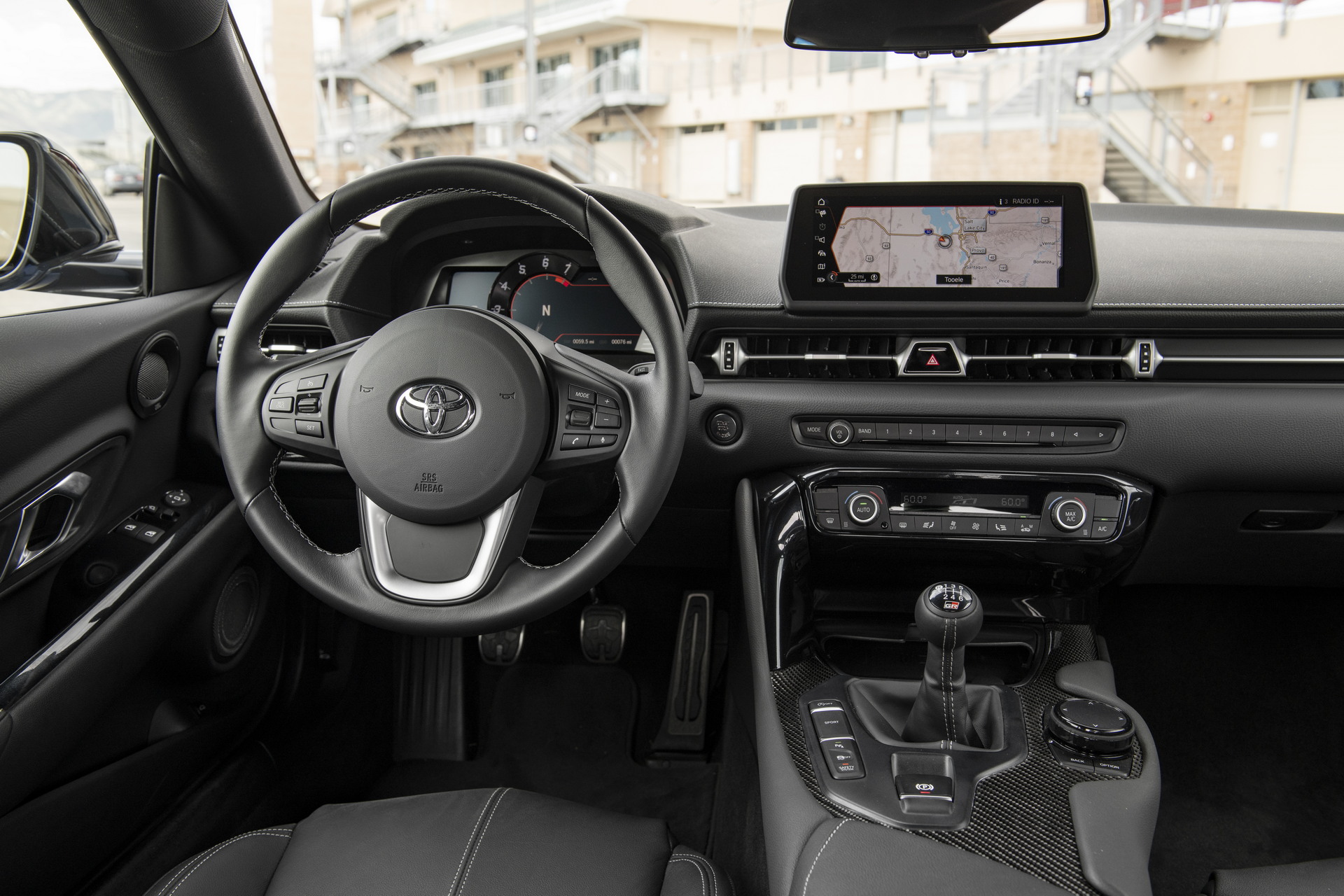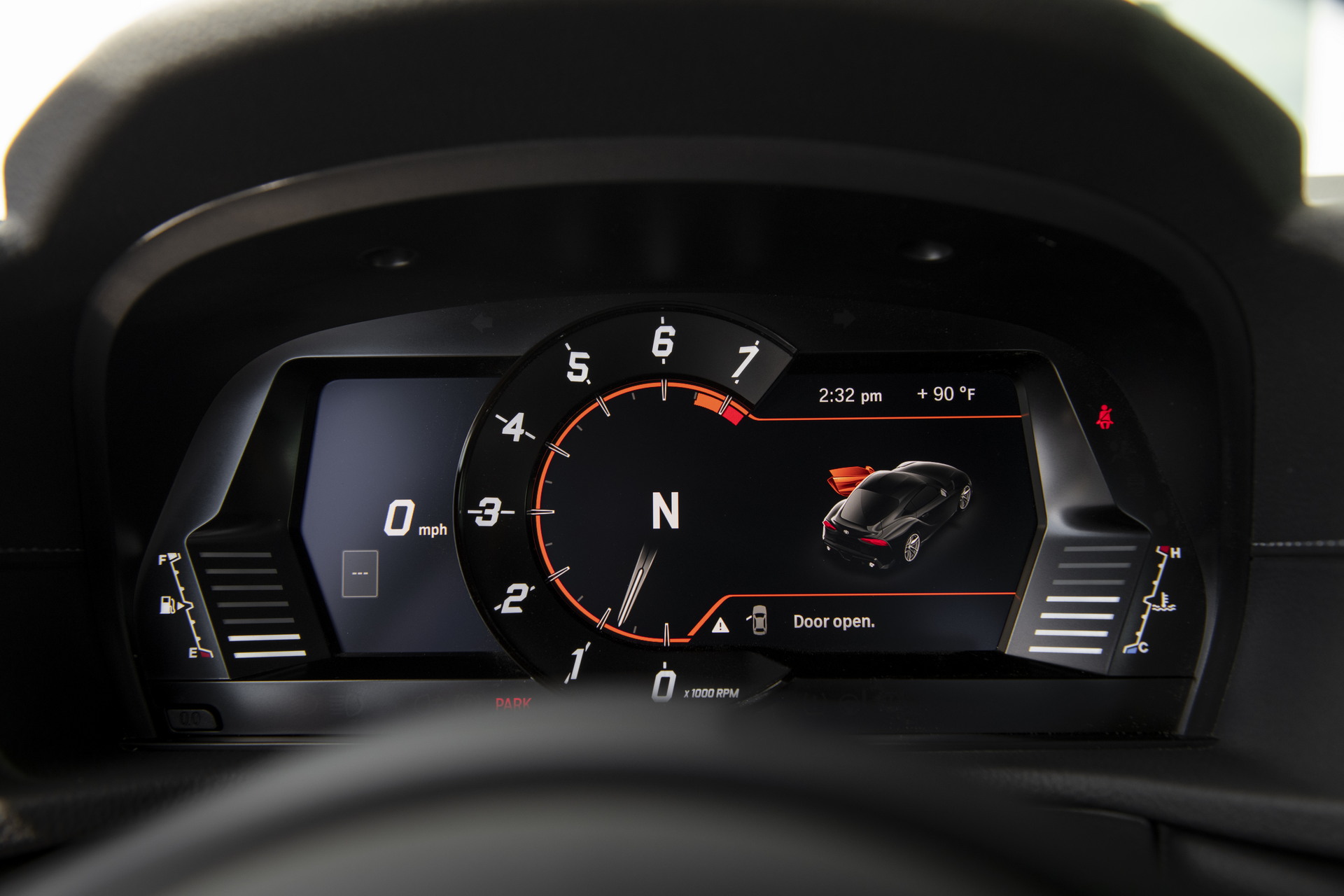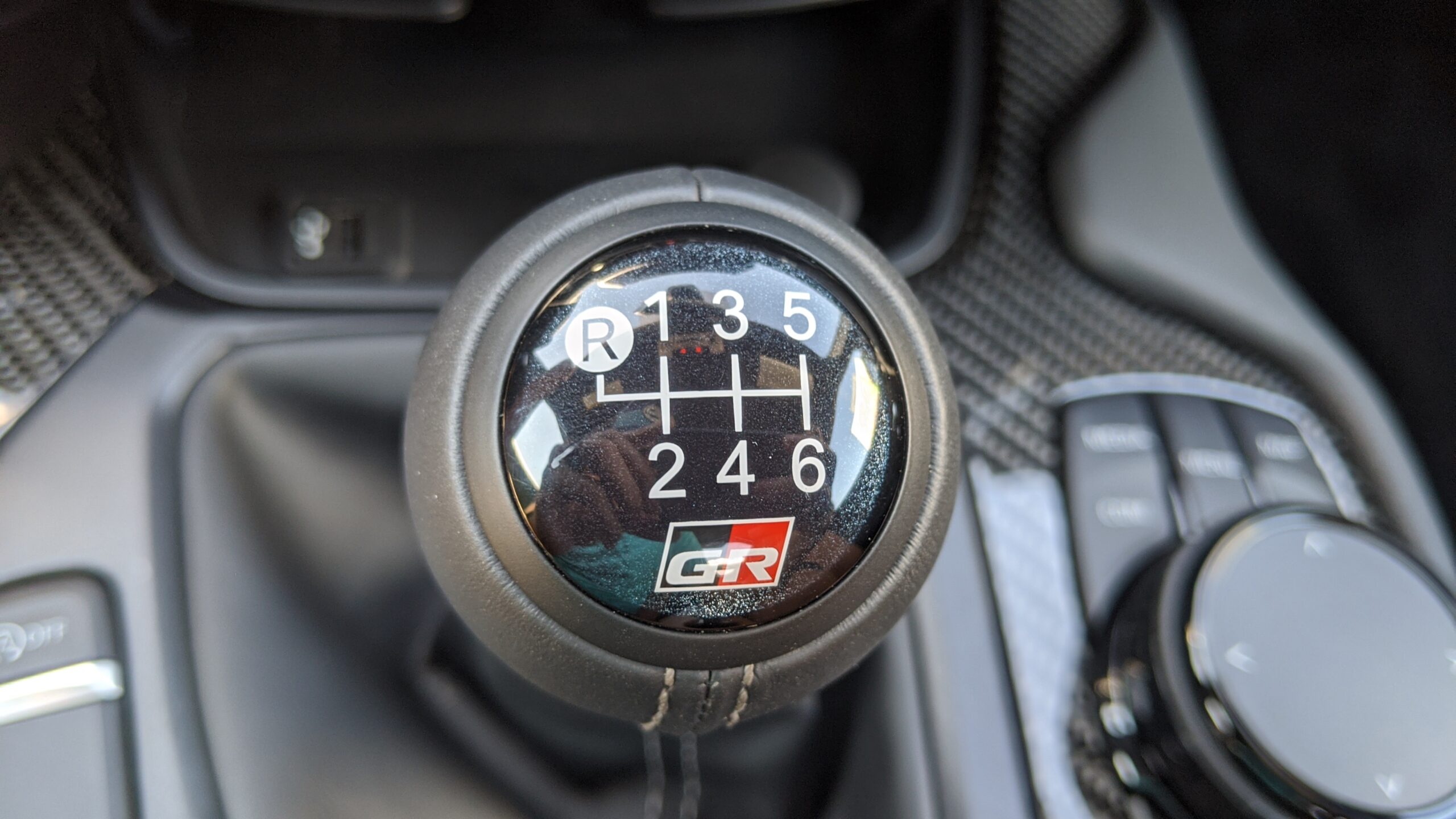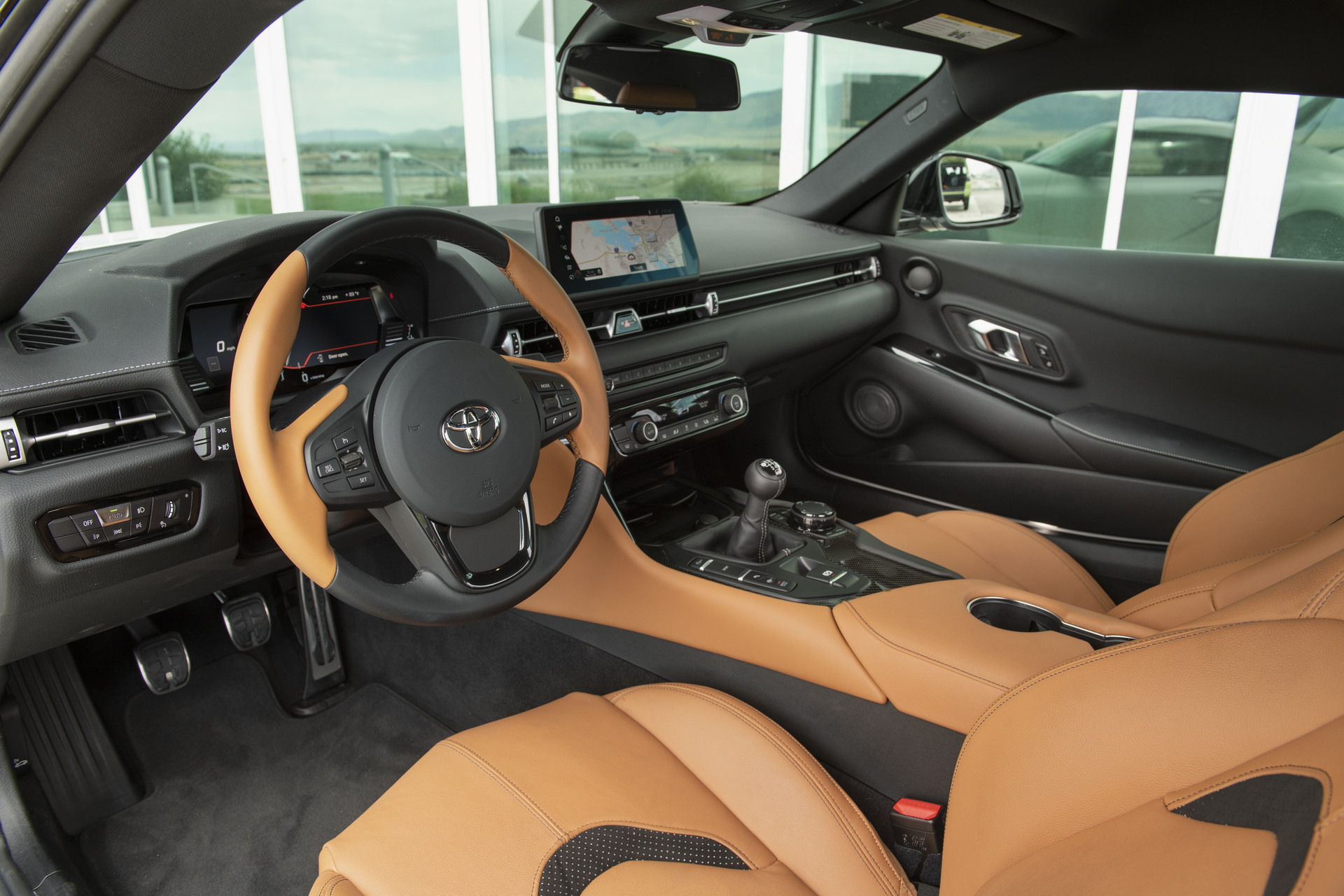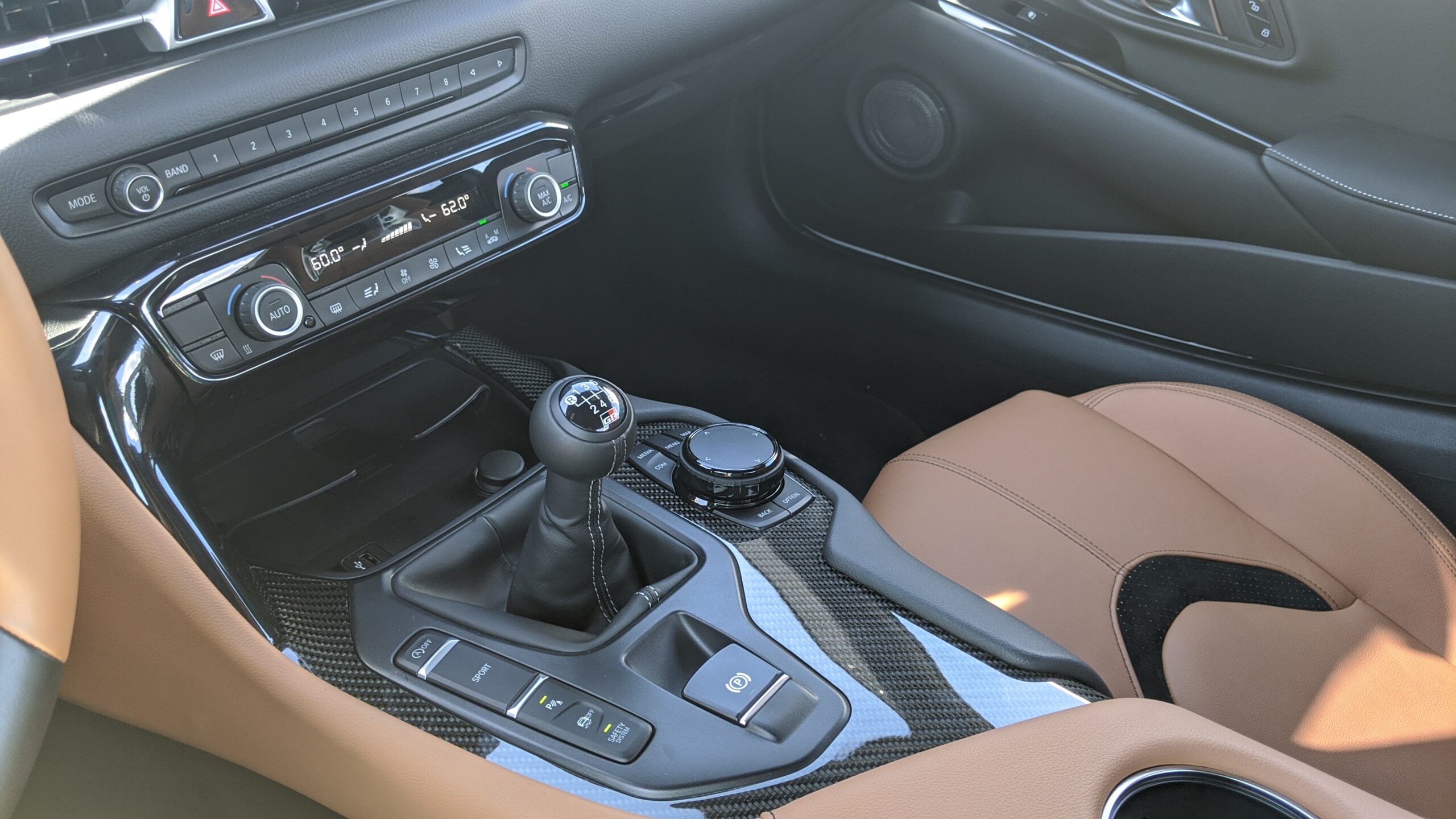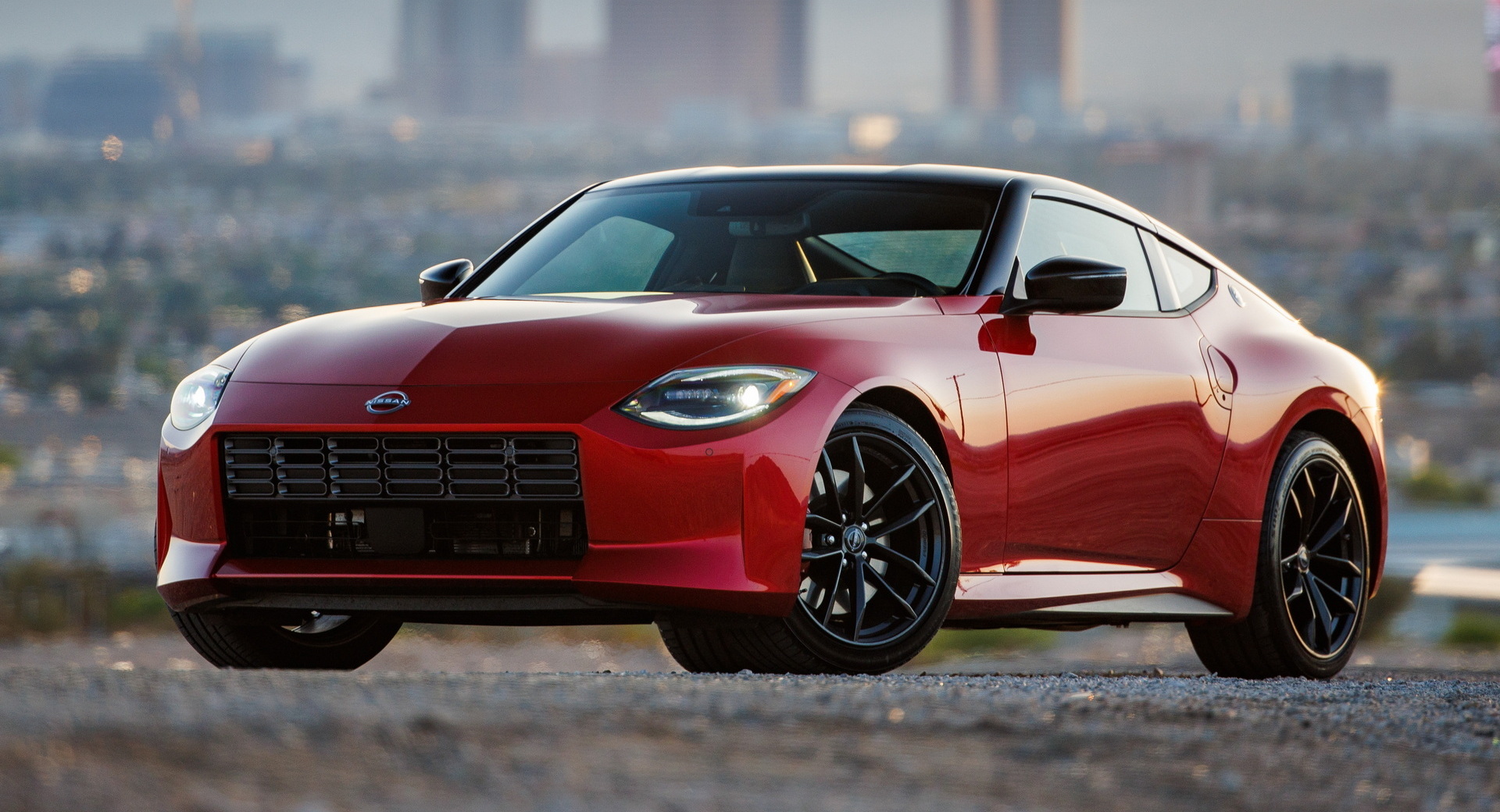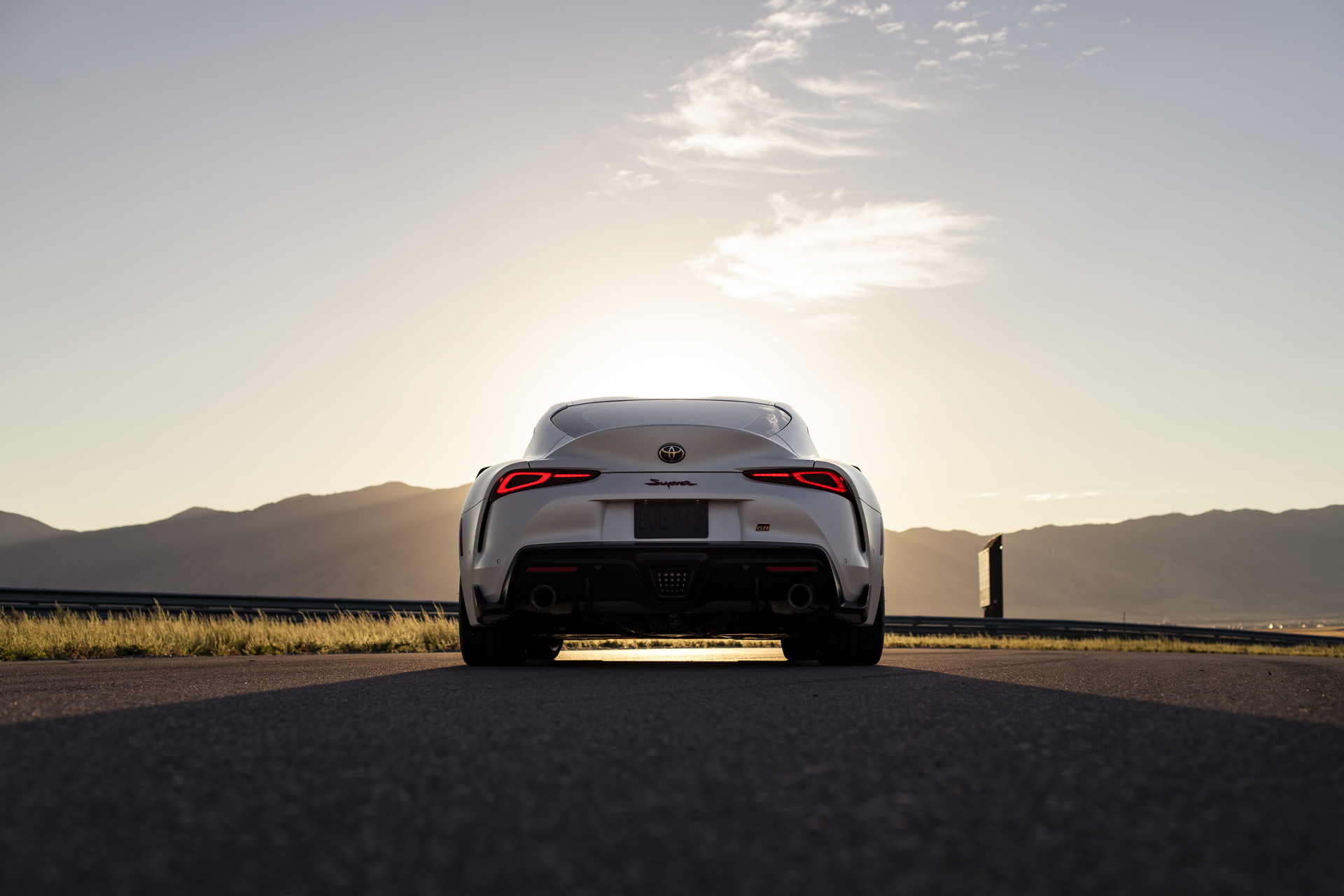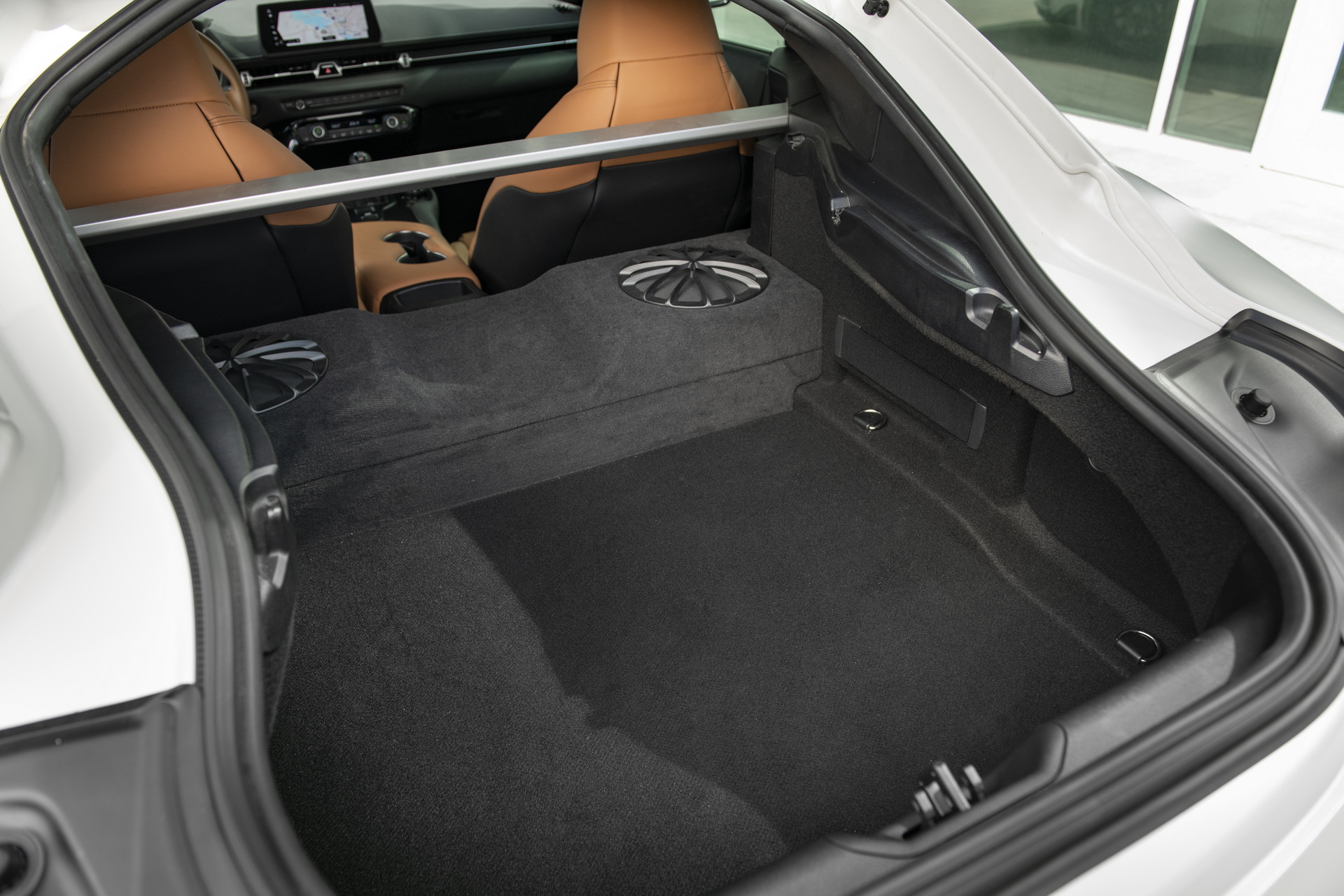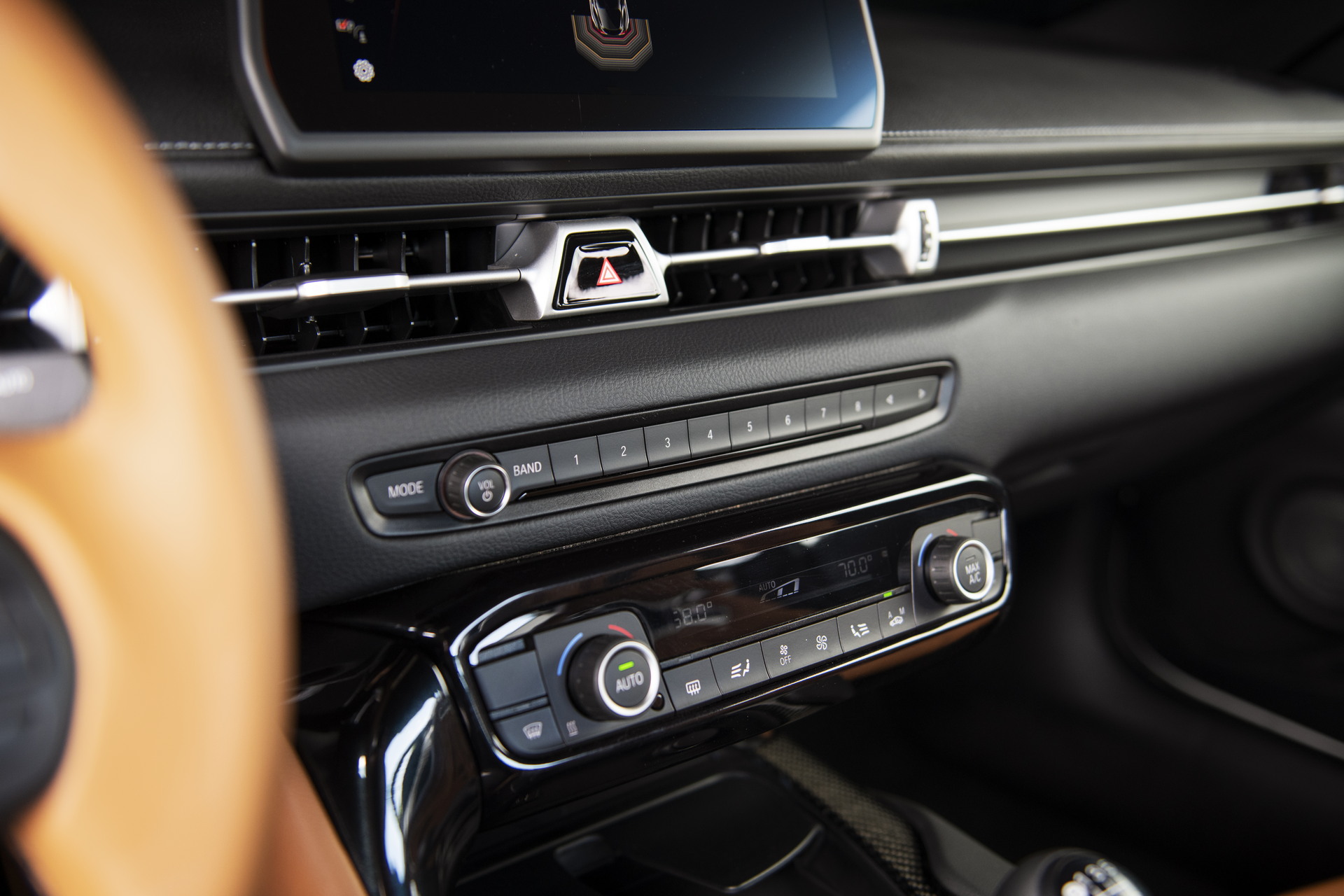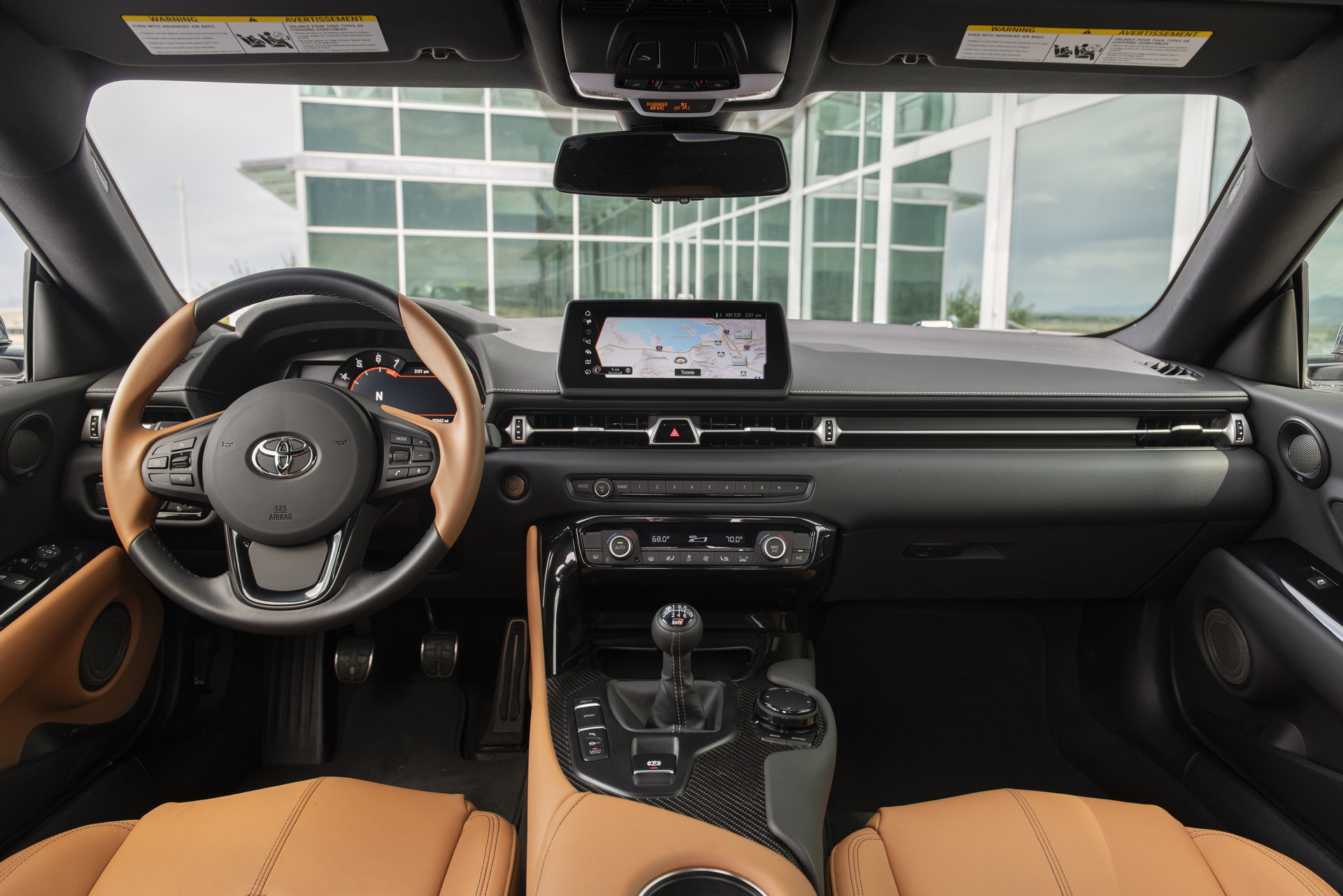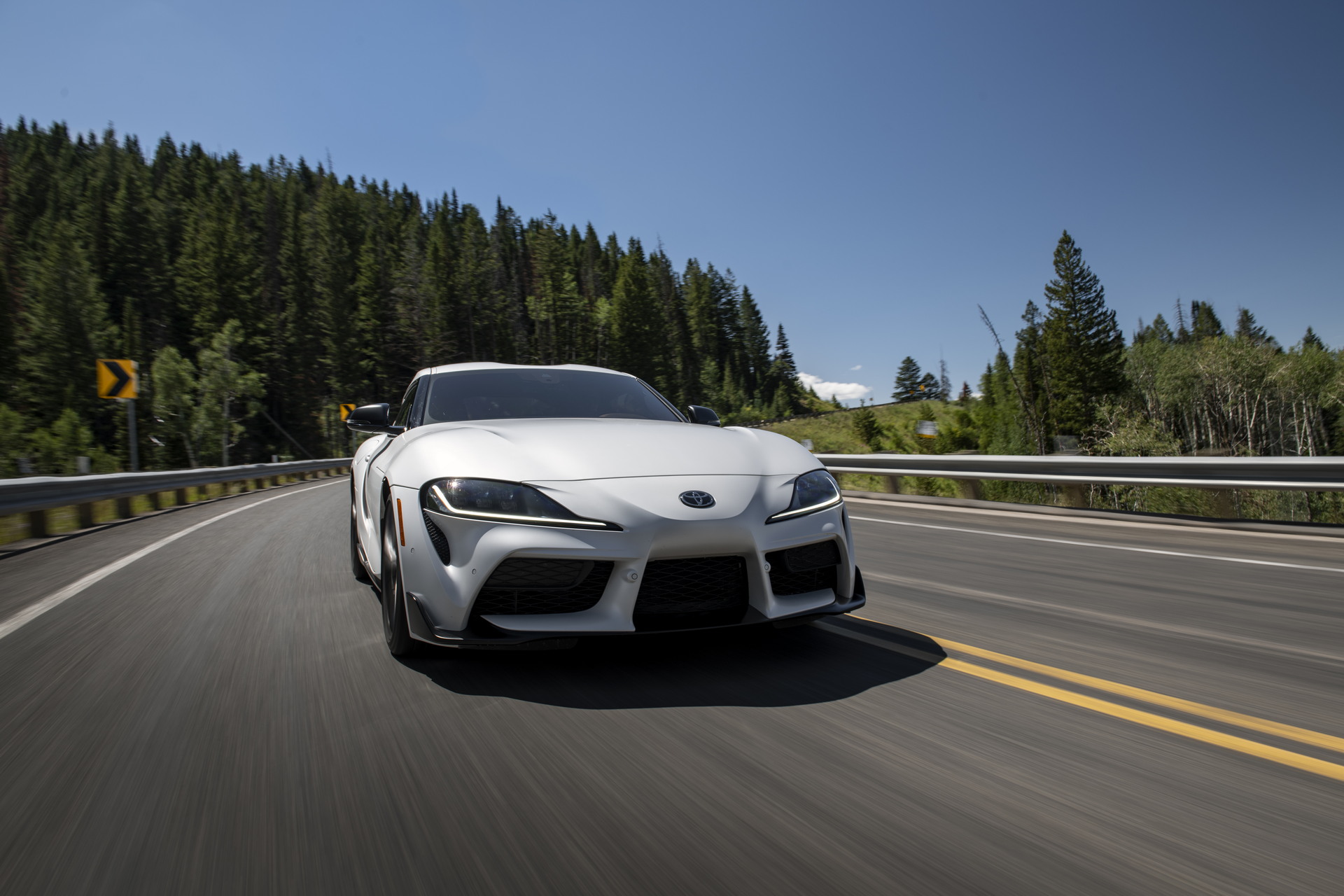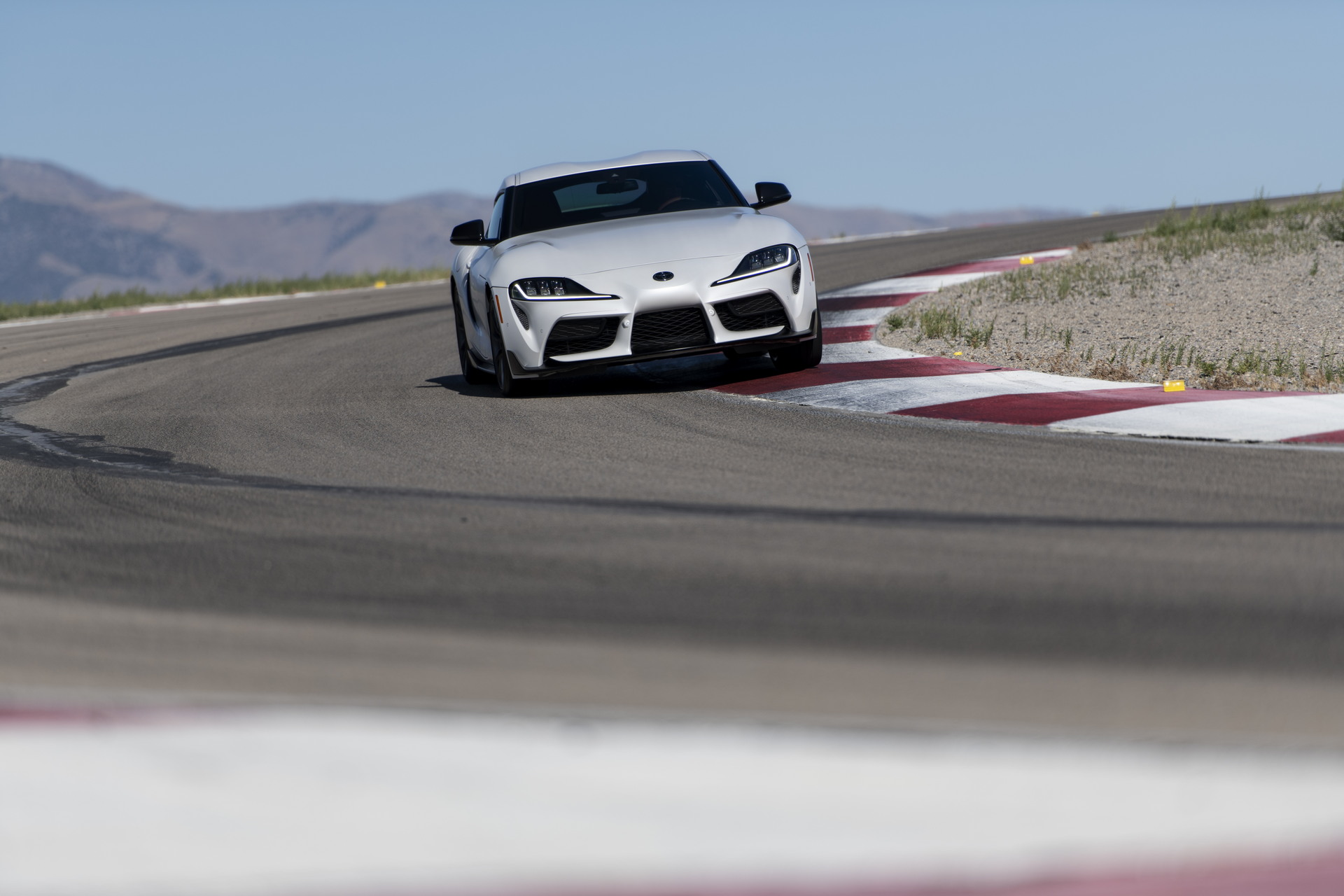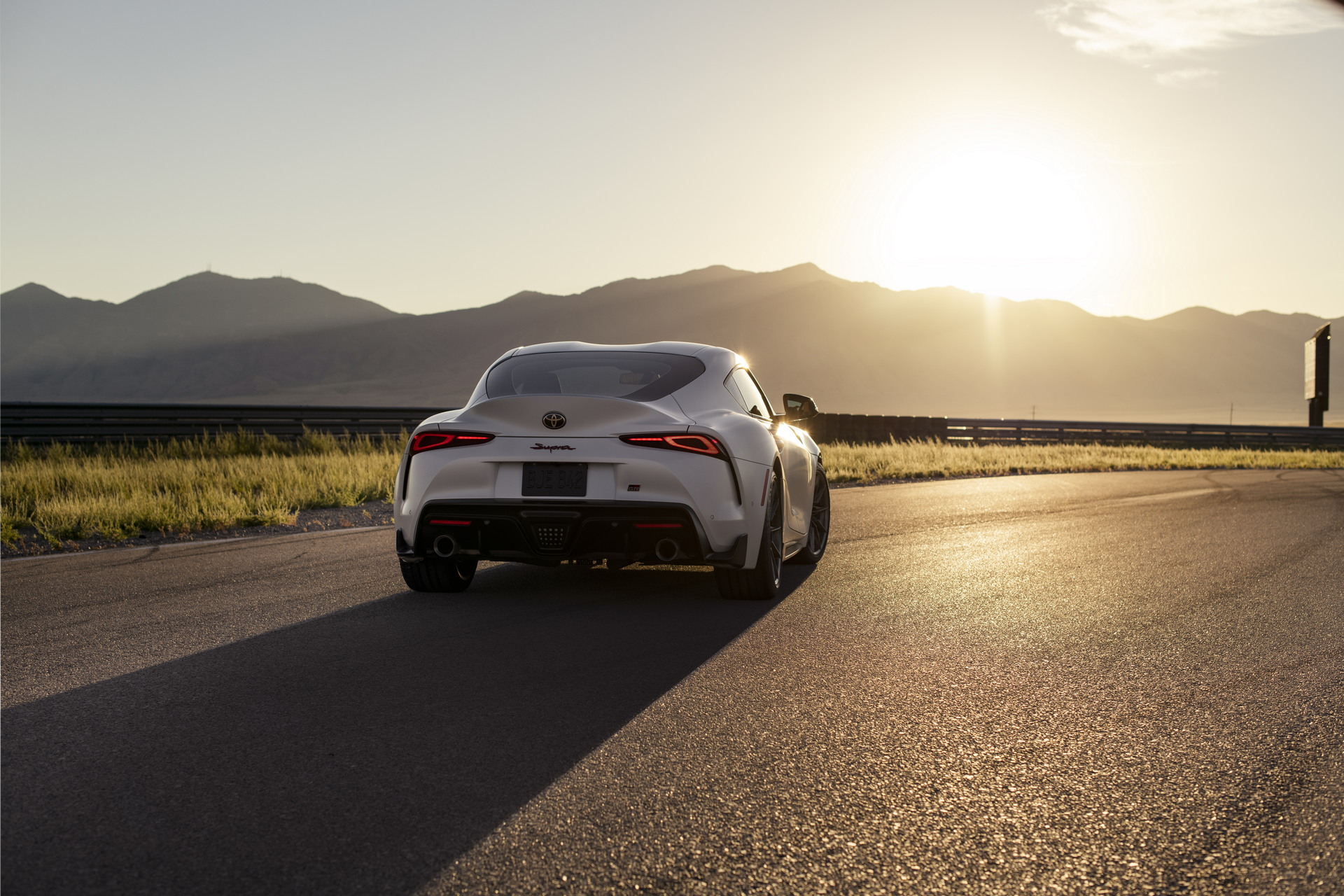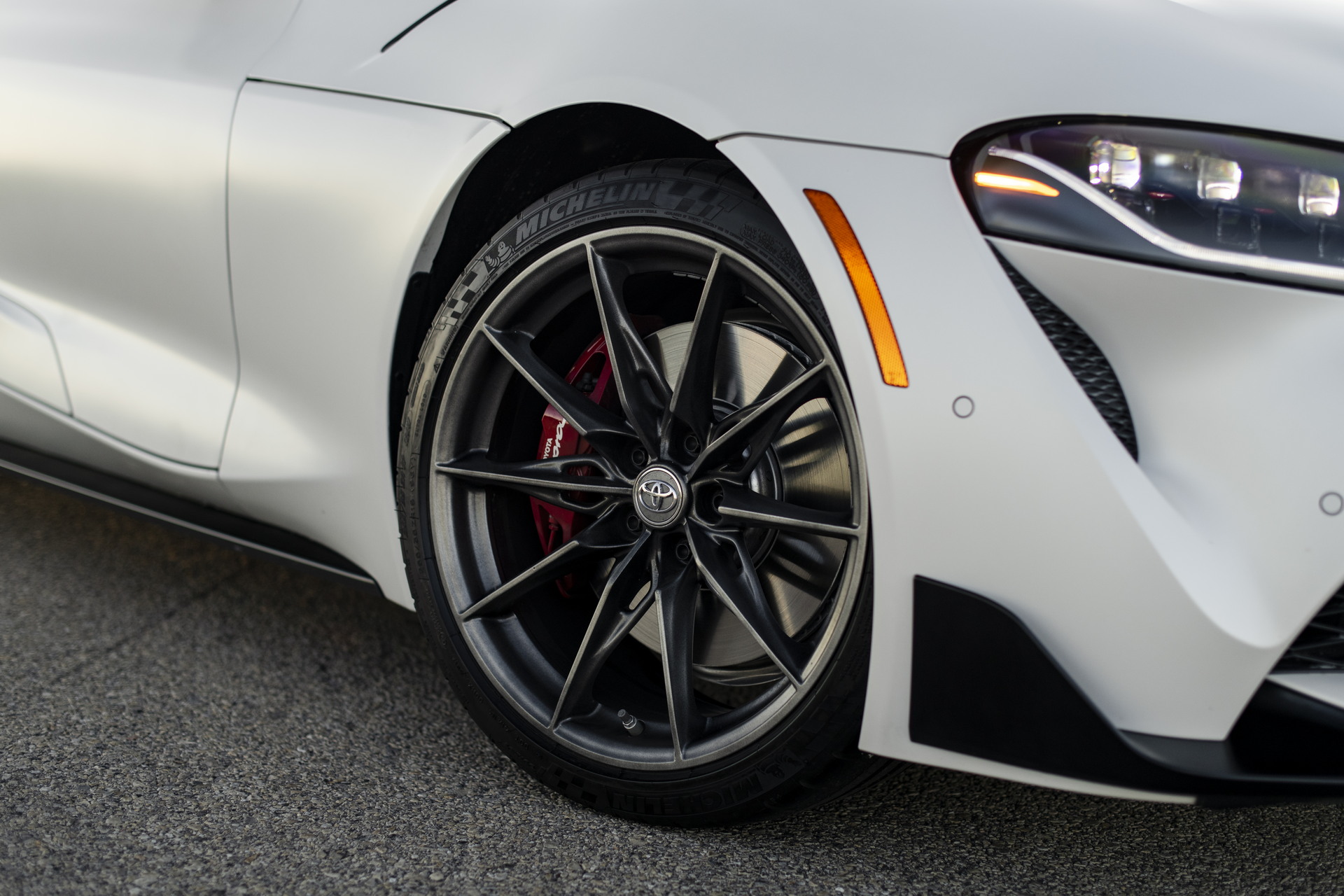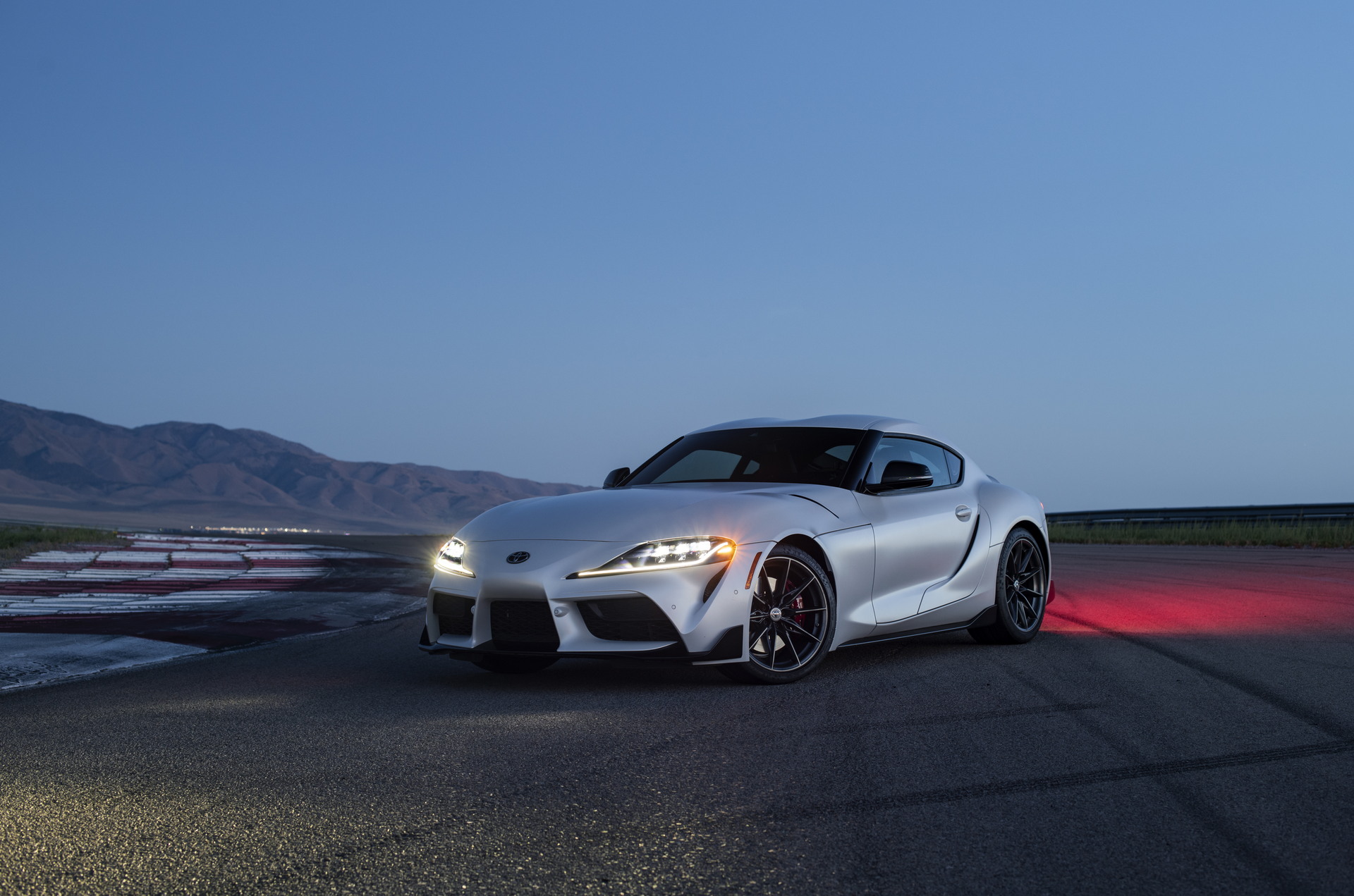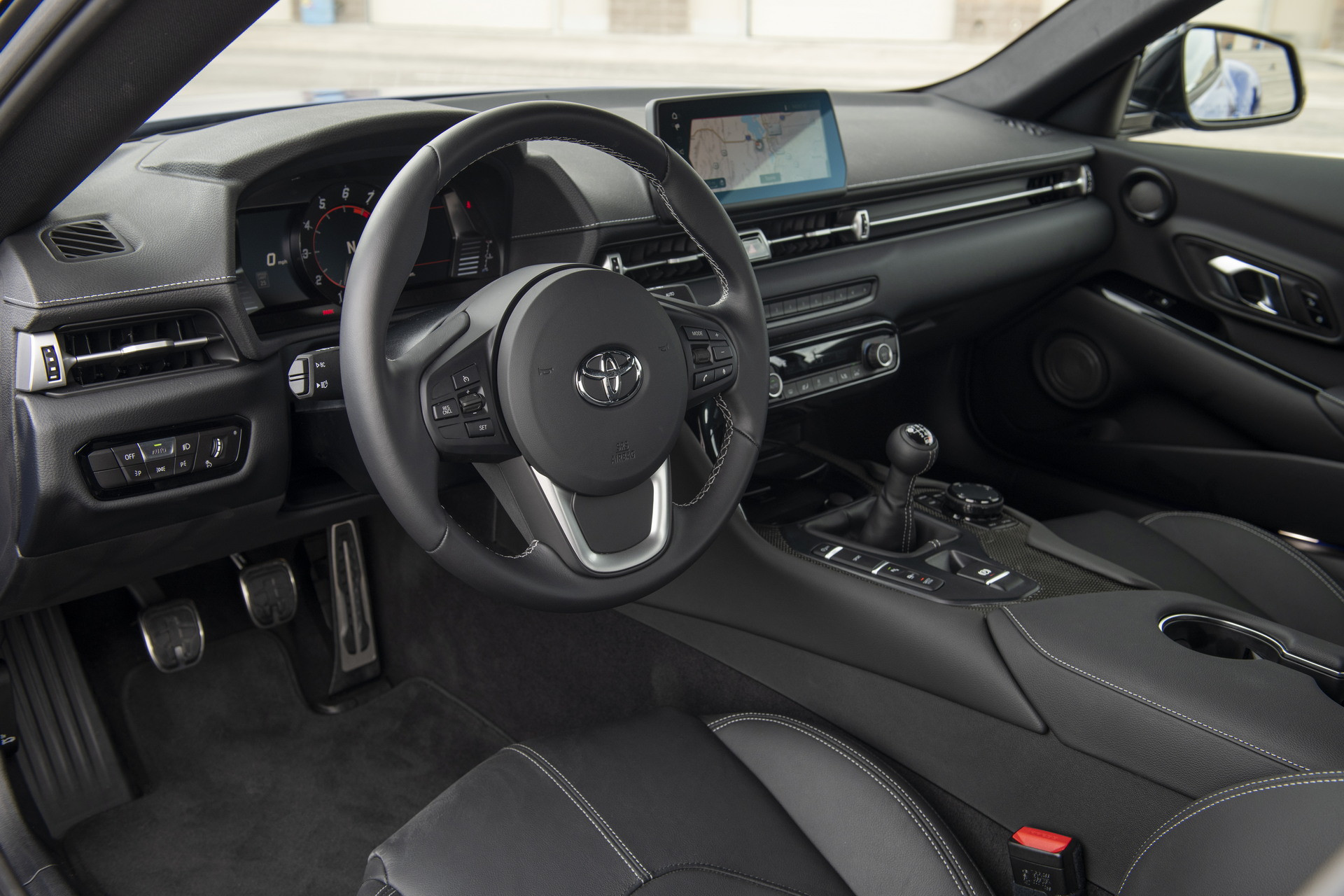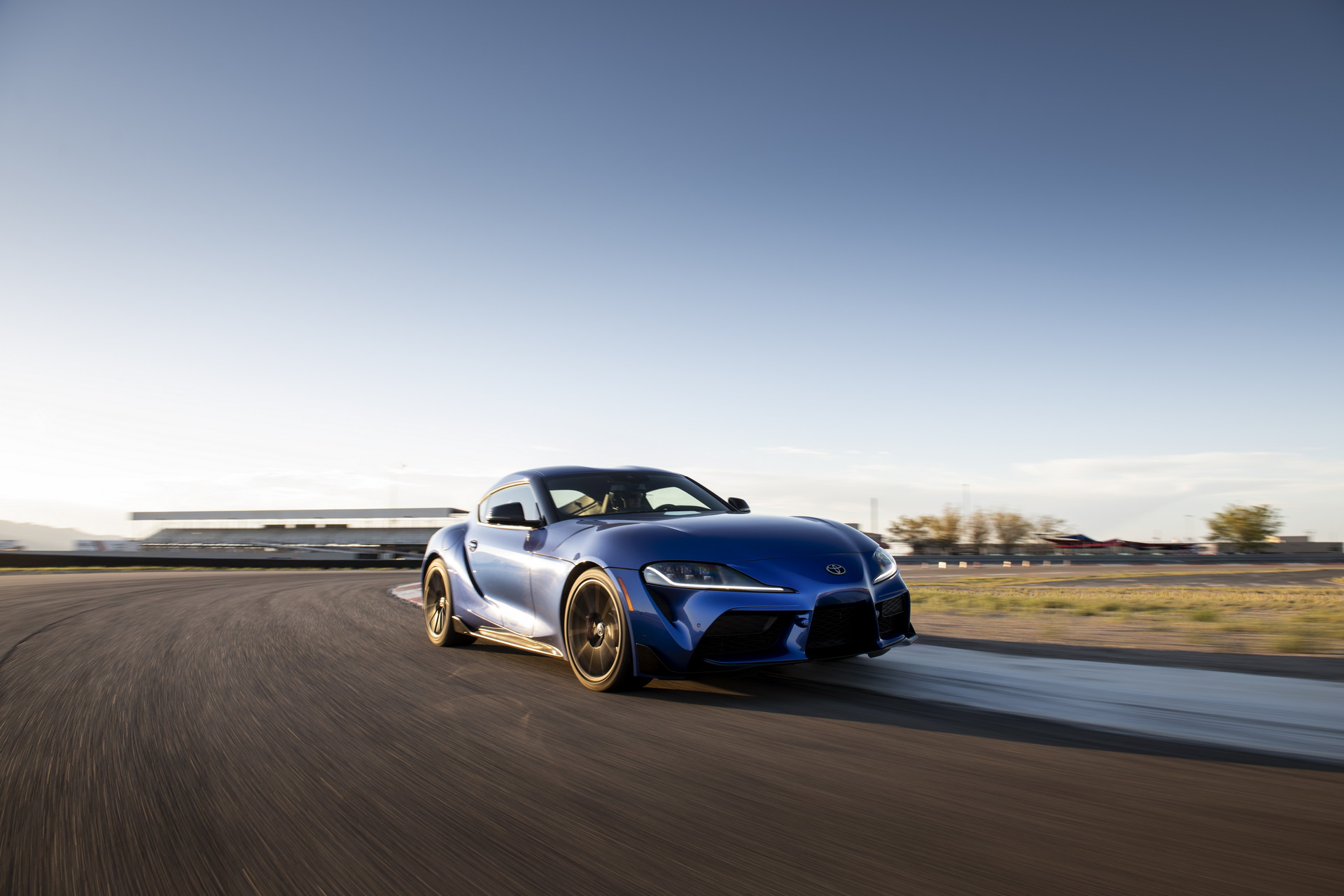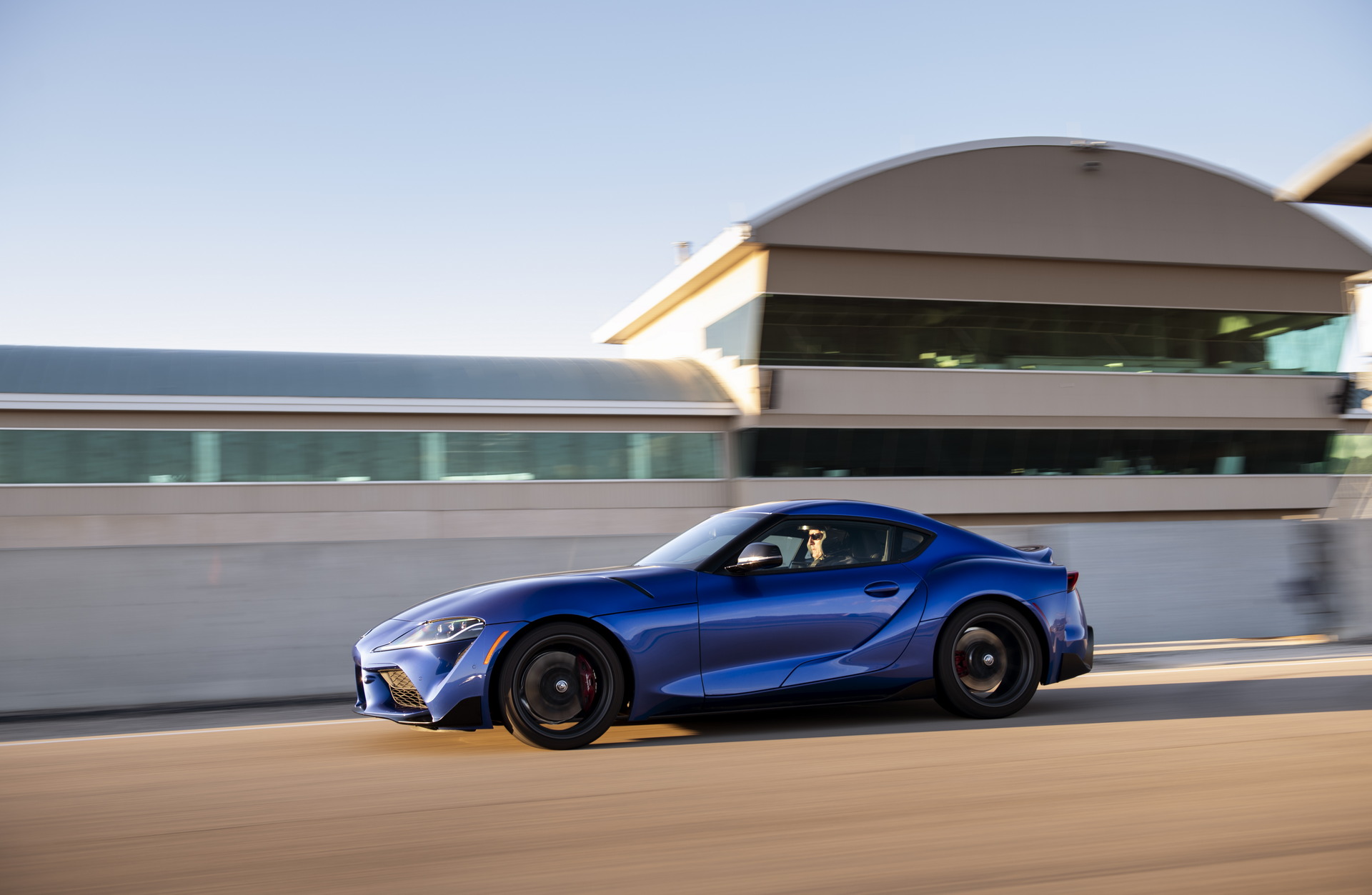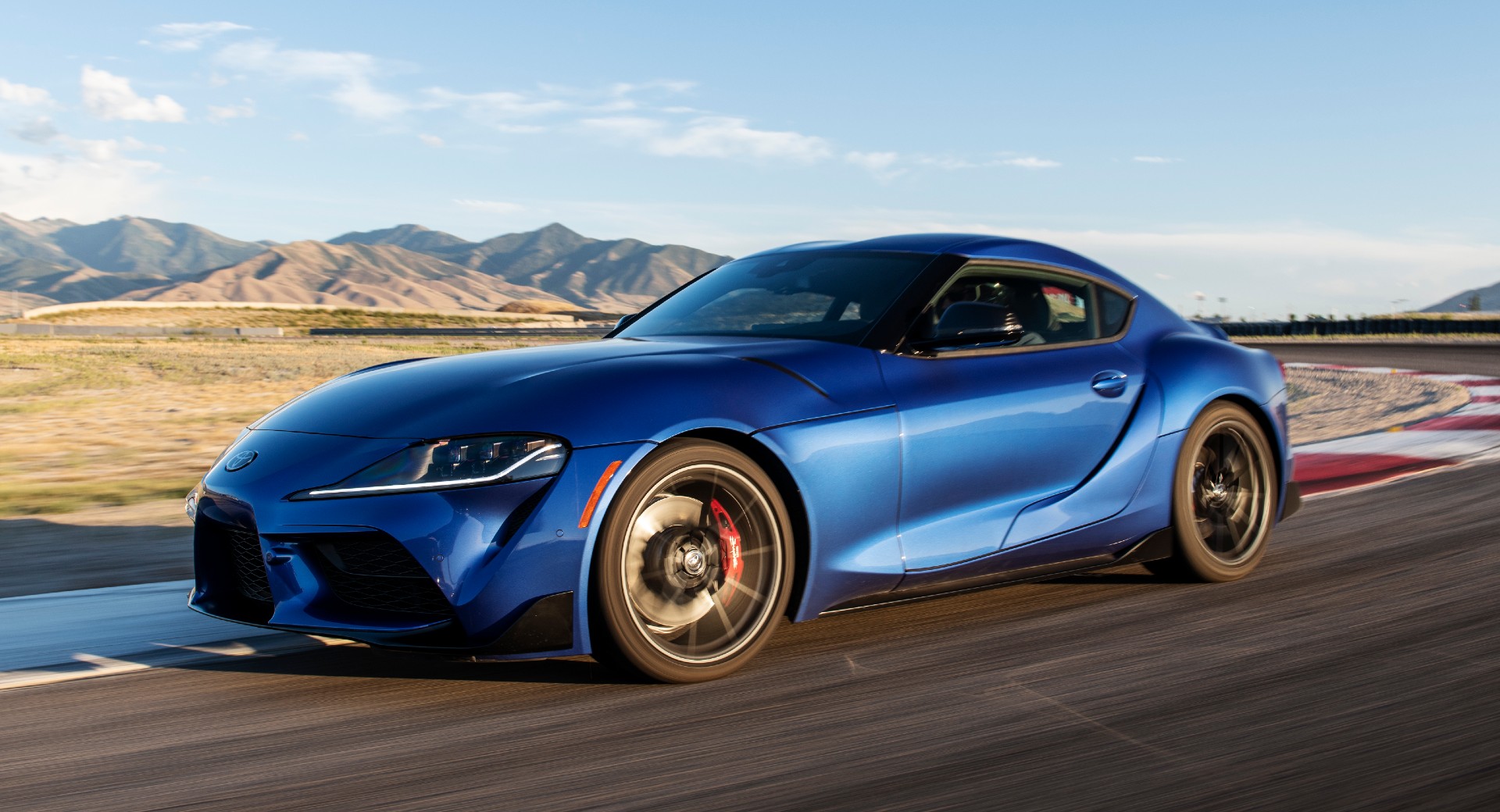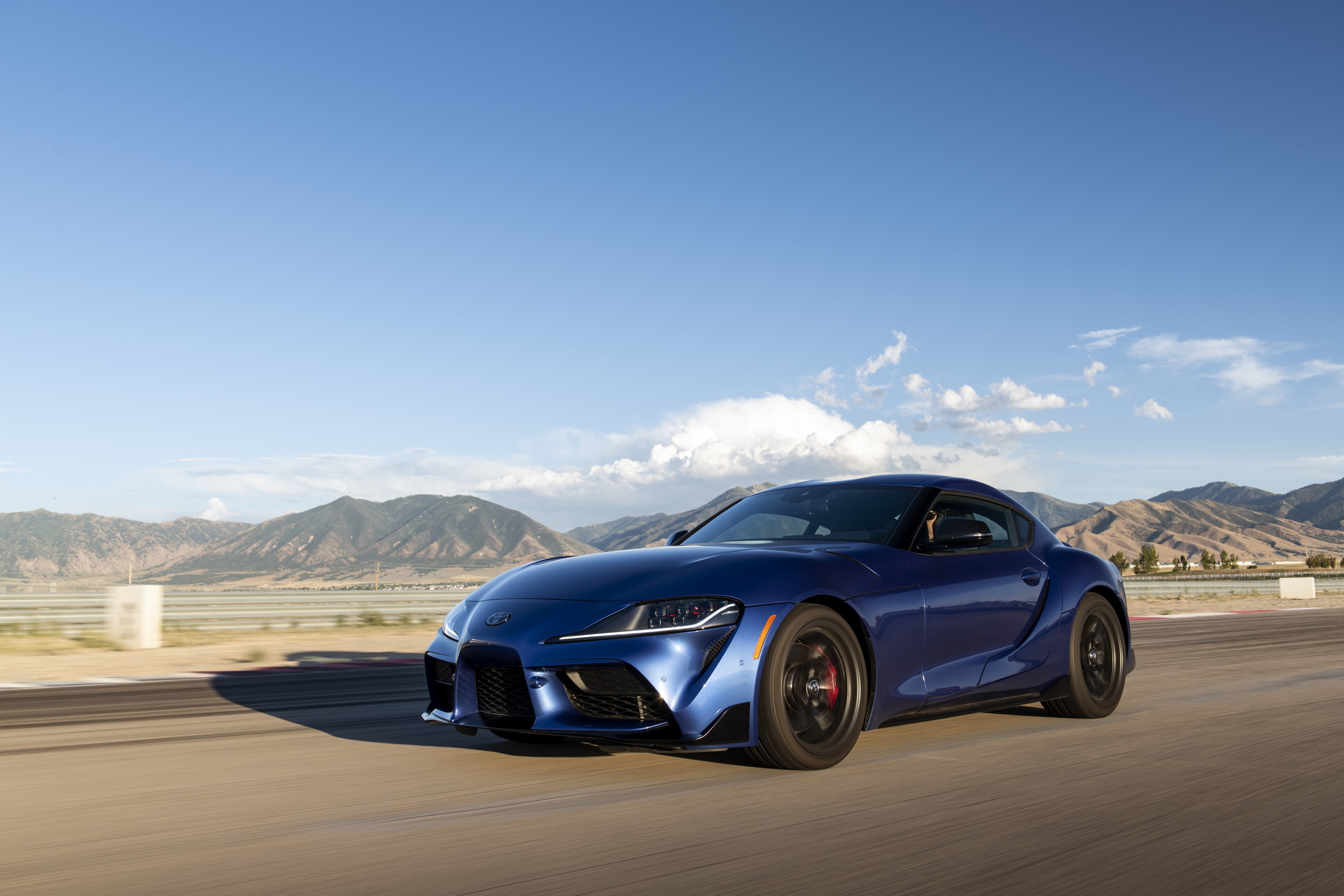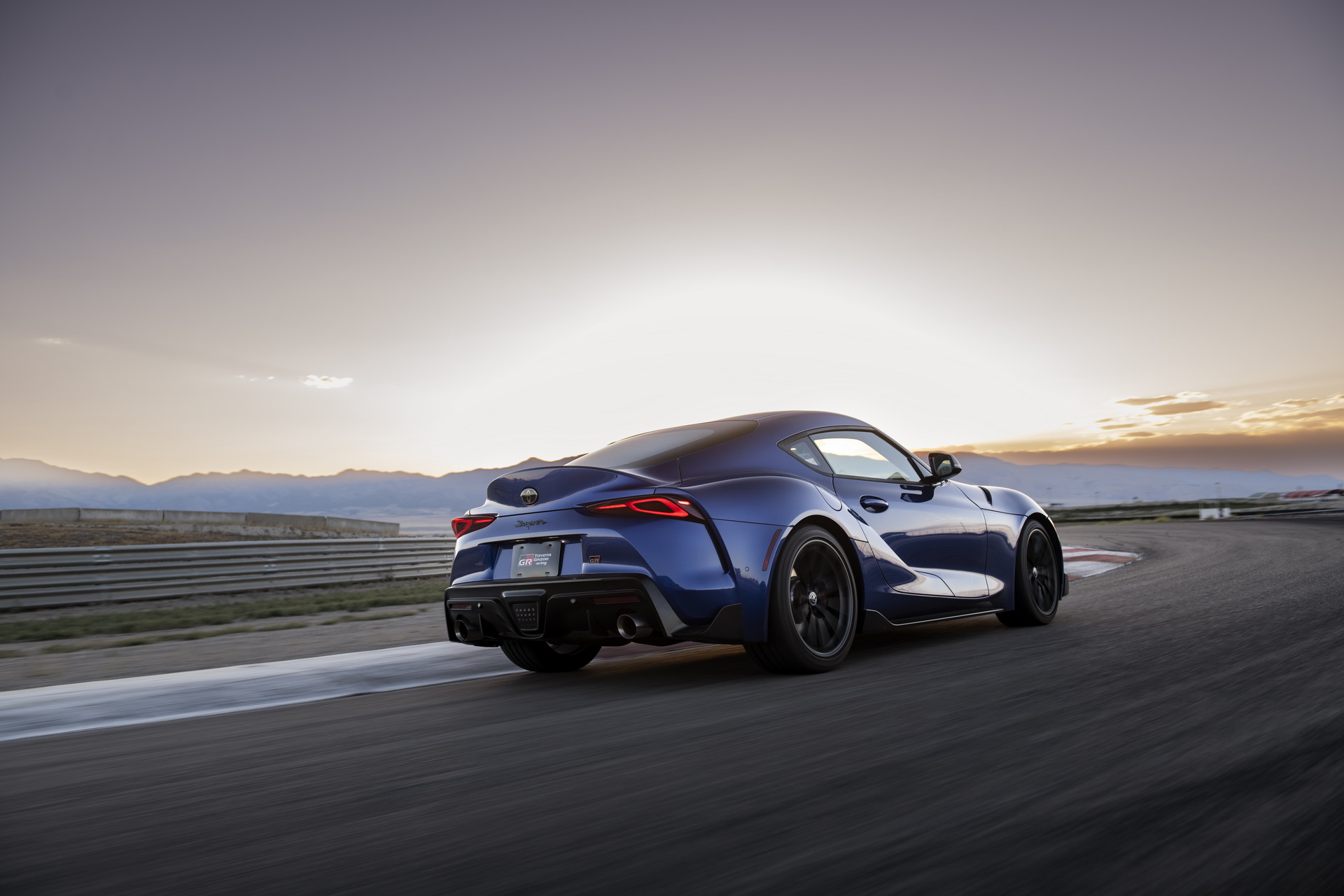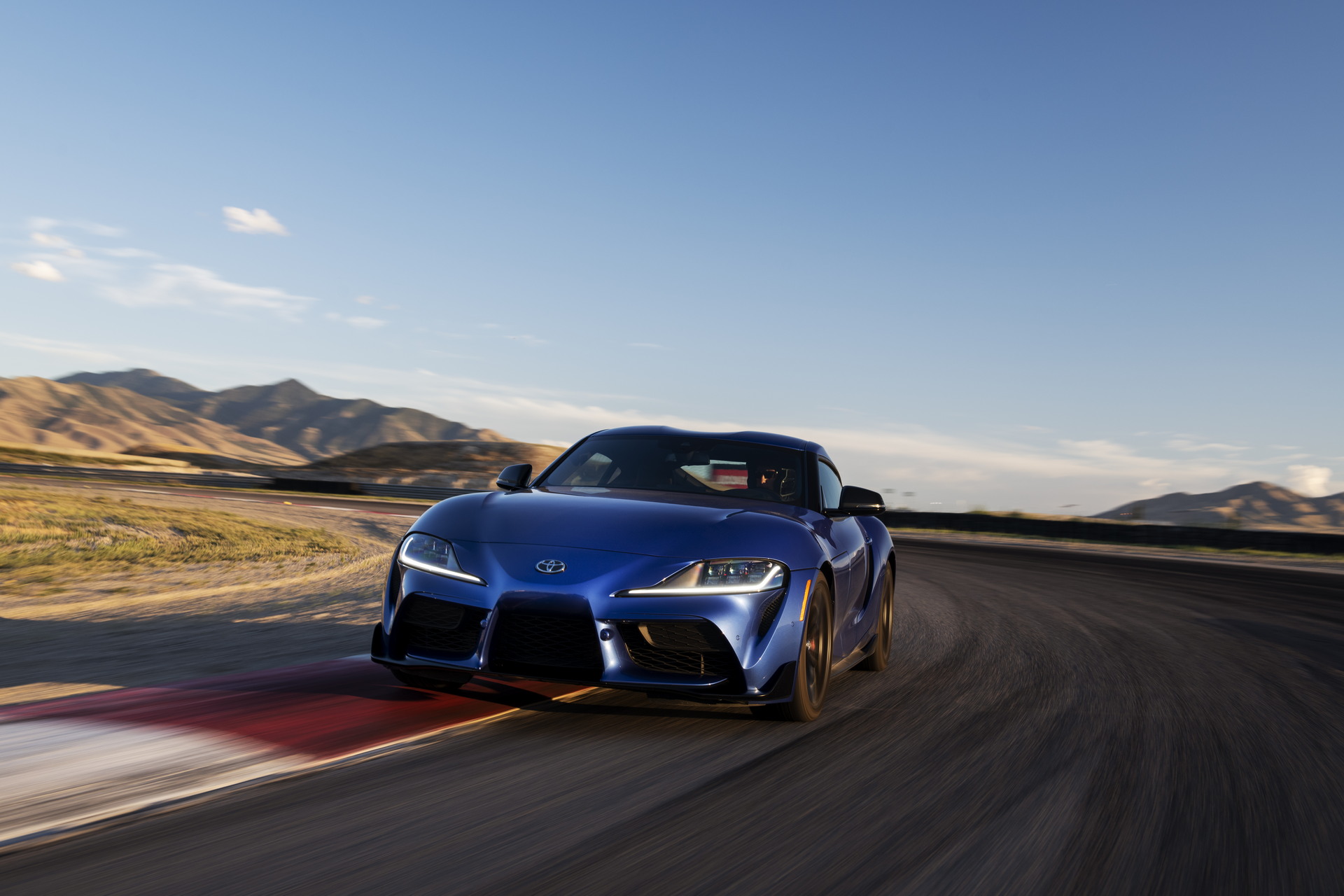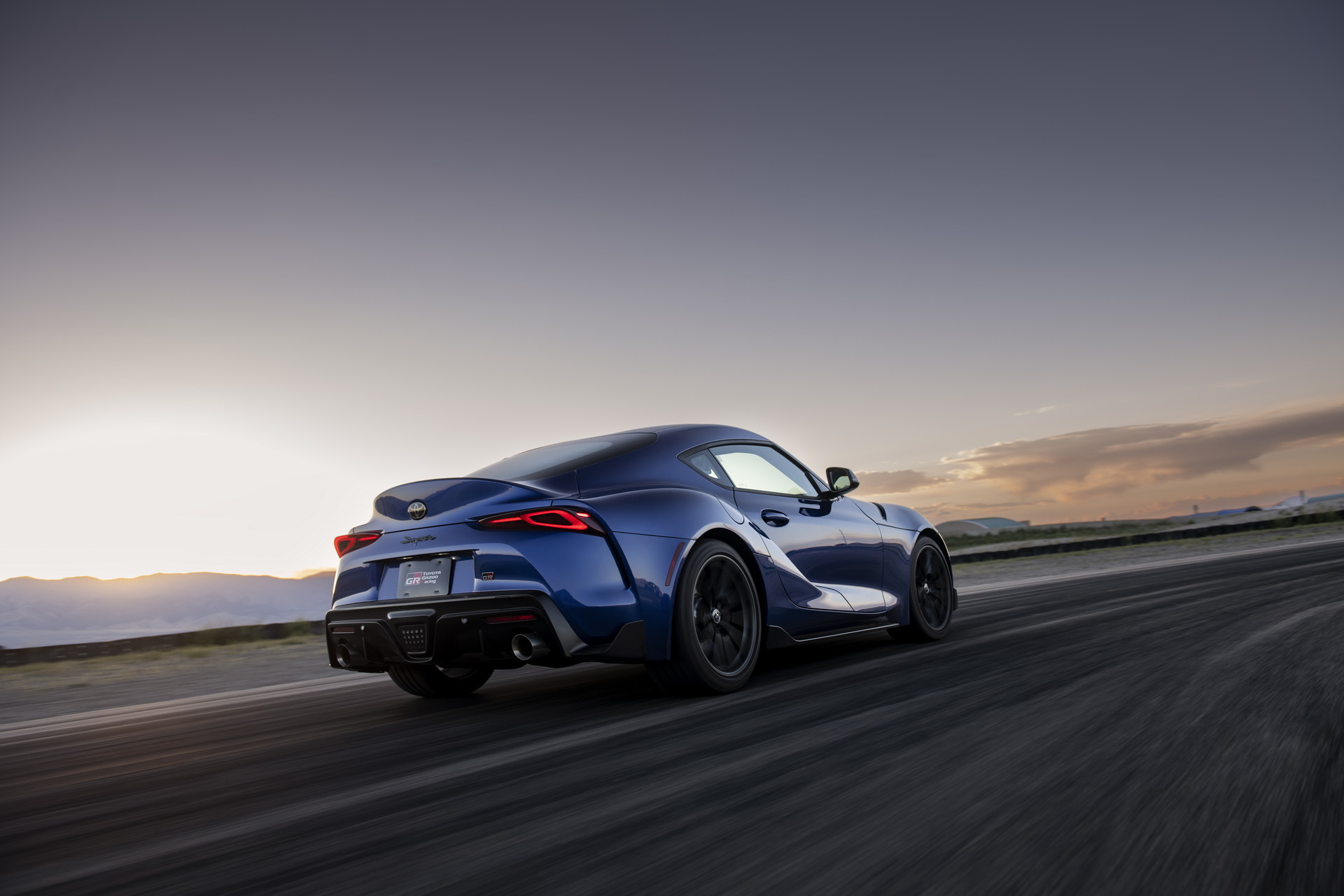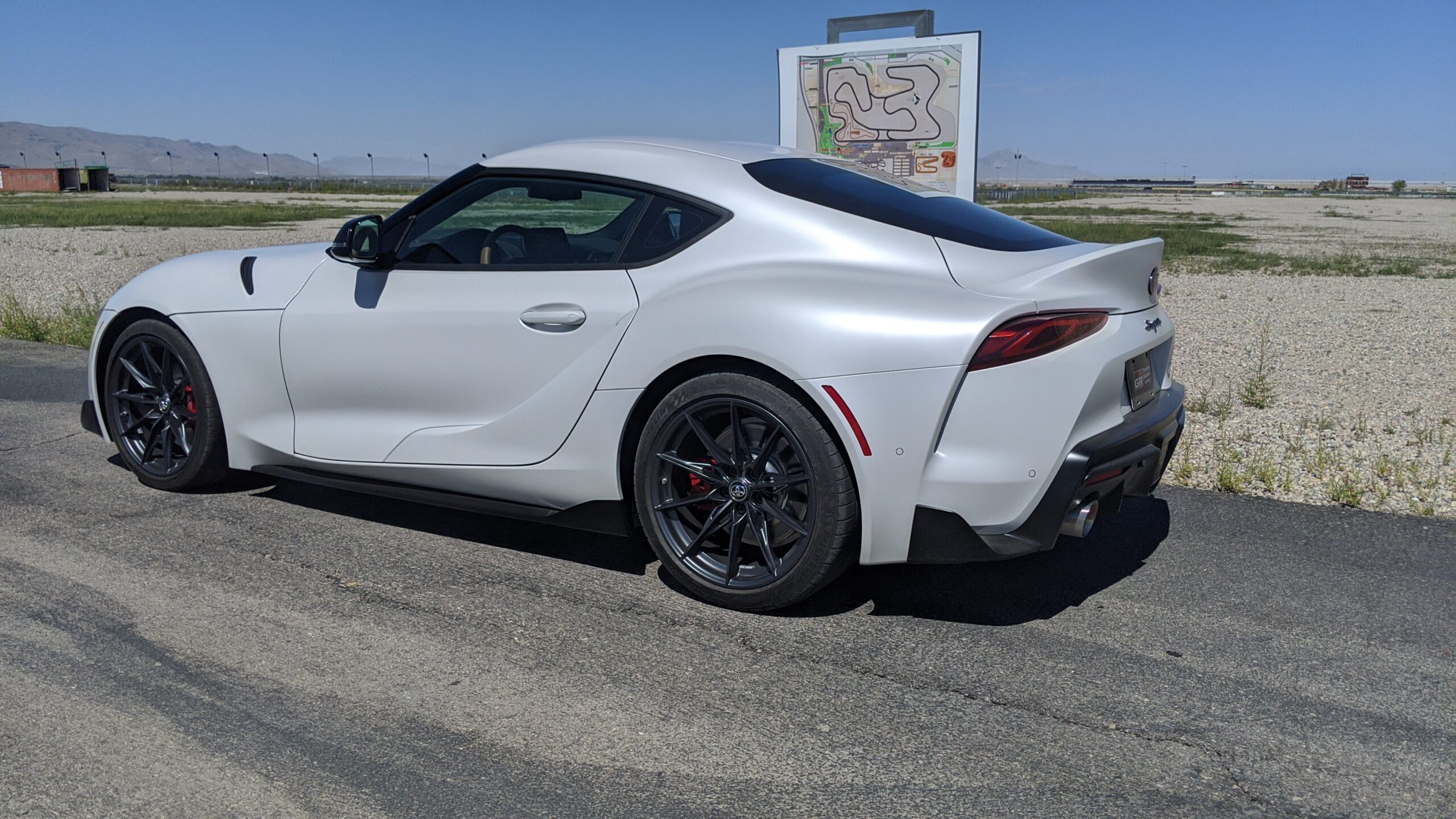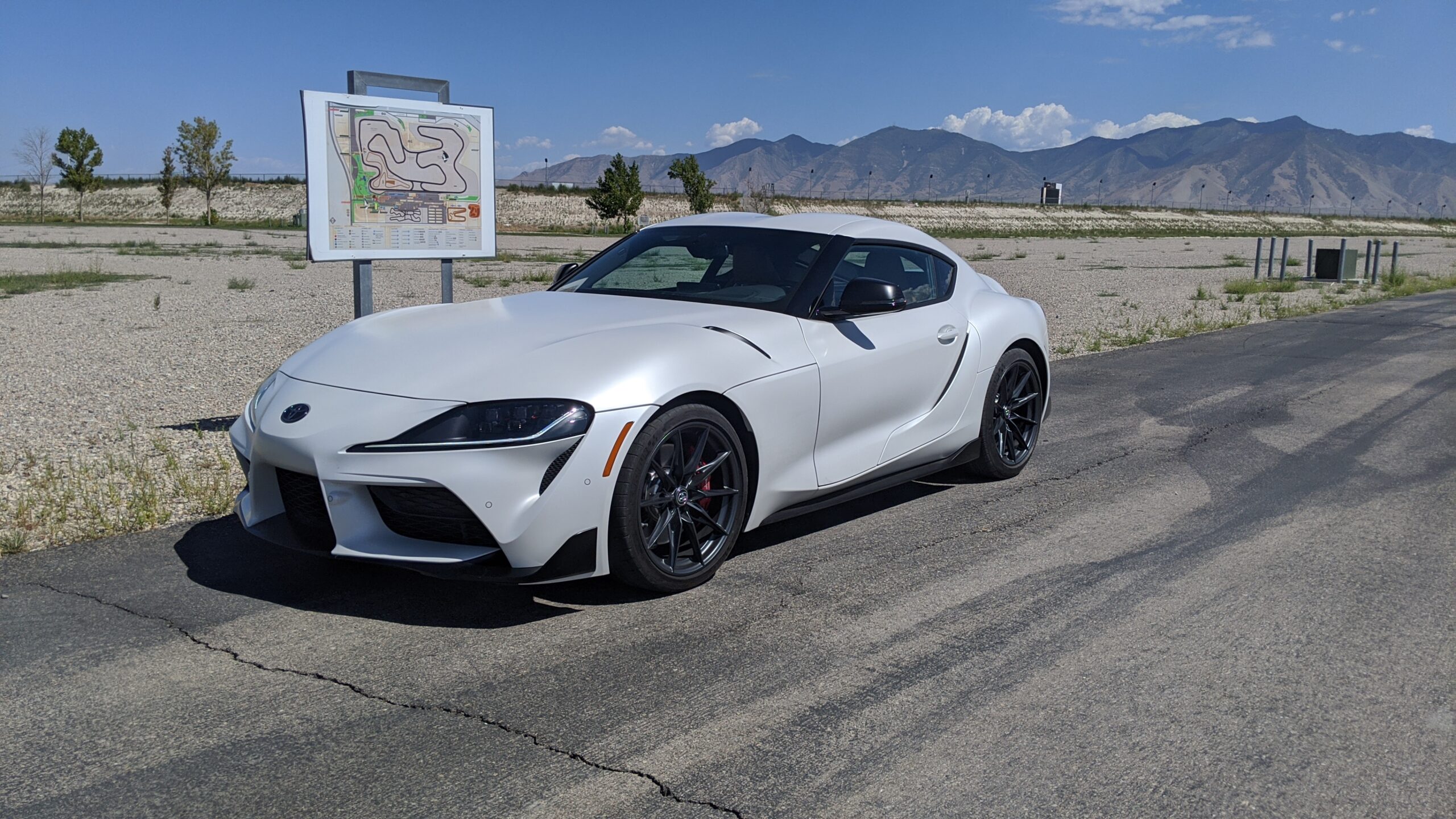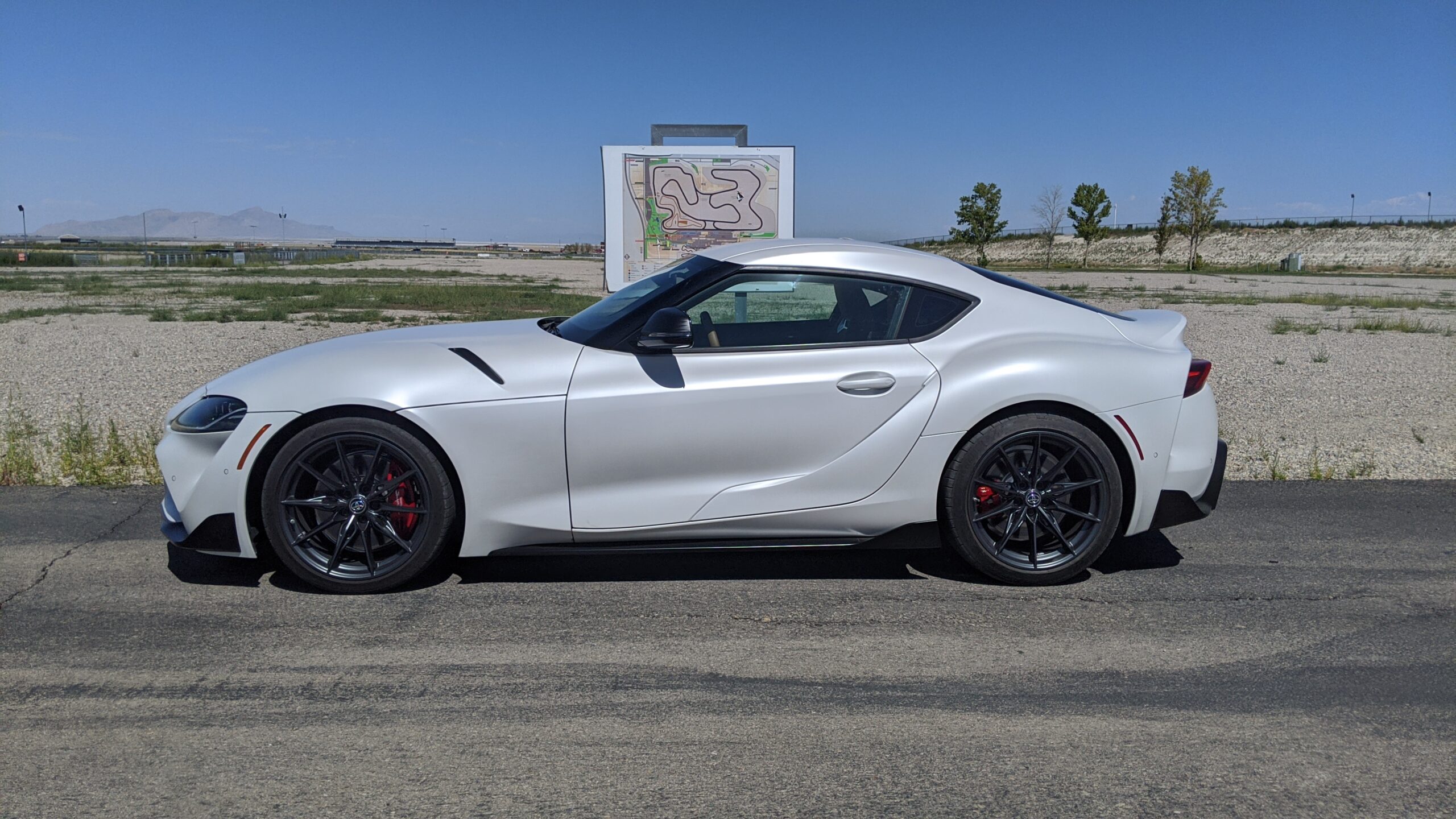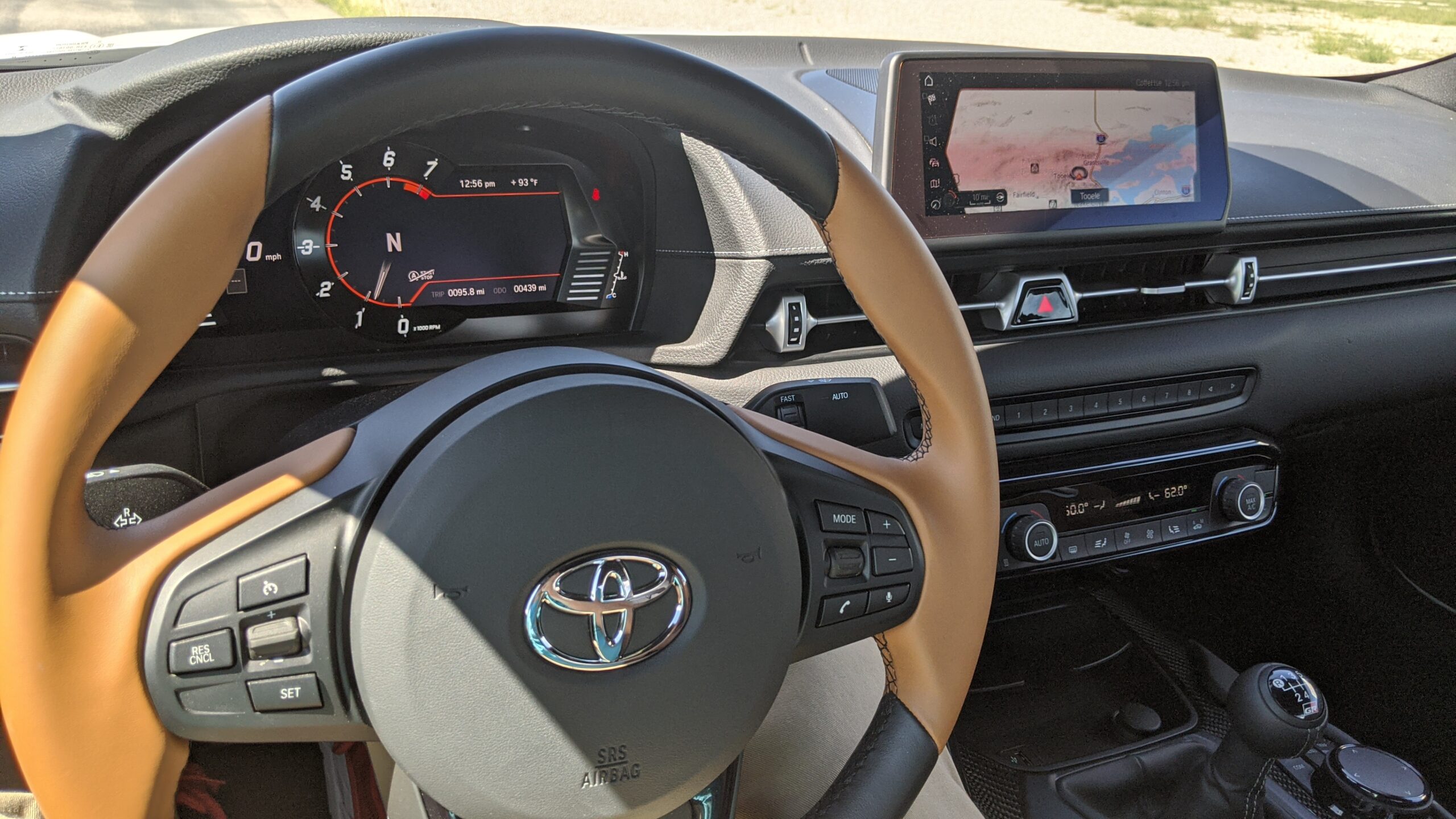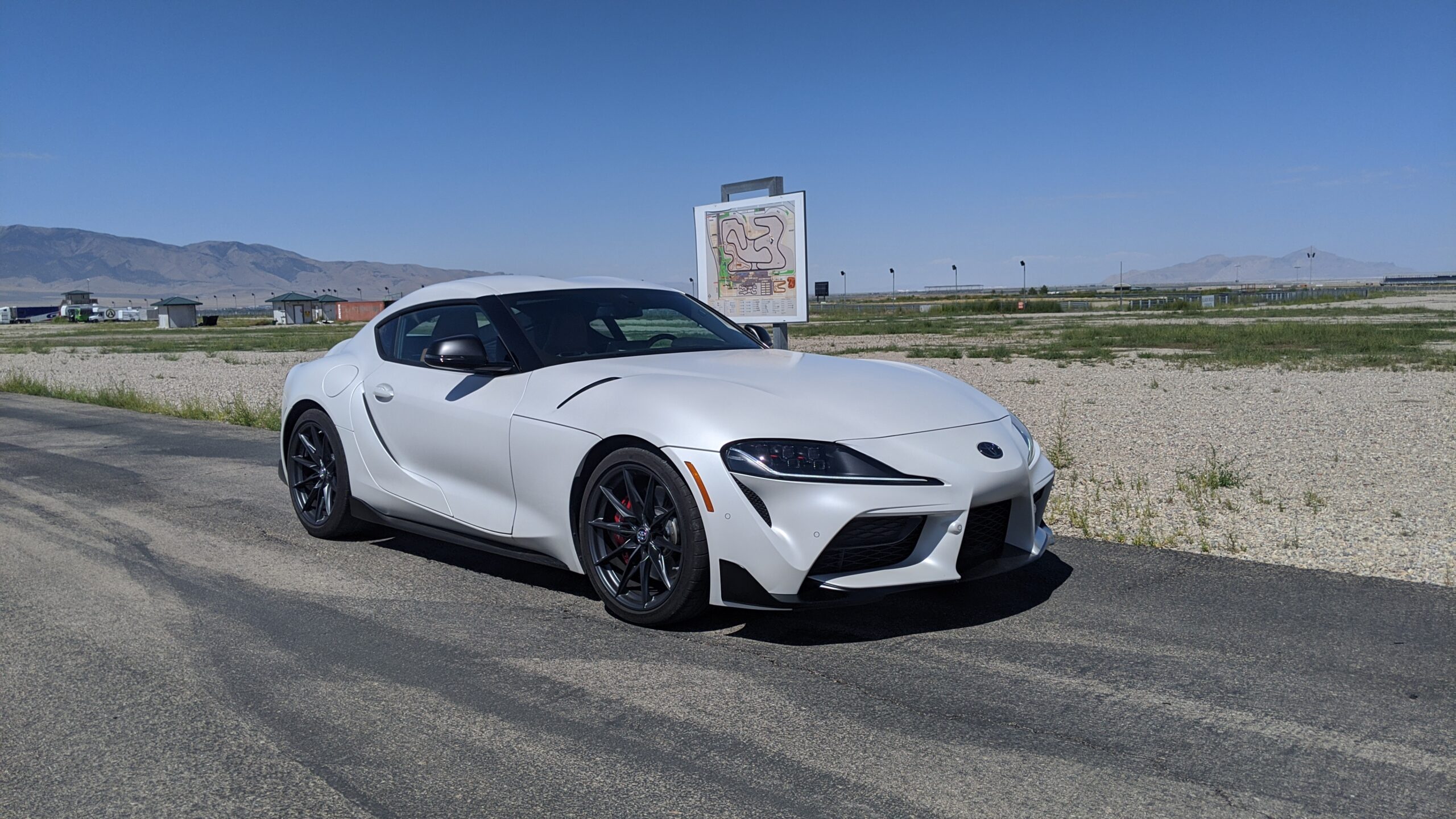The wait is officially over and GR Supras with manual transmissions are arriving at Toyota dealers across the nation. This is the first time in more than two decades that the Supra has been available with three pedals and a manual gear shifter. After a full day with it both on and off the race track, we can assure you that it’s worth the wait.
Toyota’s Vice President of Vehicle Marketing and Communications, Mike Tripp, says that the brand has been working on a manual Supra since 2019 after fans made it clear that they wanted to swap cogs on their own. Today, that’s possible again with the Toyota GR Supra MT.
Read More: We’re Driving The Manual 2023 Toyota Supra, What Do You Want To Know?
Quick Facts › › ›
› Model: 2023 Toyota GR Supra MT 3.0
› MSRP: $53,595
› 0-60 MPH: 4.2-Seconds
› Powertrain: 3.0-L Turbo Six-Cylinder l 6-Speed Manual l RWD
› Output: 382 Hp (284 kW) / 367 Lb-Ft (497 Nm)
› EPA: 23 MPG City / 31 MPG Highway (est)
› On Sale: Now
Last week, we went out to the Utah Motorsports Campus to test out the new GR Supra Manual along with the new GR Corolla. You’ll have to settle for what the GR Corolla sounds like on track for another week but today we can tell you everything you want to know about the Supra MT. Toyota didn’t just pull a gearbox out of the parts bin here. It tailored this transmission to suit the Supra and that’s easily felt from behind the wheel.
Not Just Another BMW Part
It’s easy to think of a transmission swap as little more than a change of physical components. For better or for worse, in today’s age of highly computerized automobiles, it’s not that simple though. To that end, Toyota leaned on its Gazoo Racing engineers, Toyota Motor Europe, and the transmission gurus over at ZF to create the gearbox.
It is not an off-the-shelf unit that comes from a specific BMW model either. Many of the main components are from BMW like the housing and the gearset but Toyota also sourced a few components that are bespoke to the Supra itself. That includes an all-new shift lever, a new large-diameter clutch, and a reinforced diaphragm spring built to handle the high-torque (367 lb-ft / 497 Nm) output of the Supra.
Toyota also says that the weight and shape of the gear knob itself, as well as the shift engagement, have all been fine-tuned. It also shortened the final drive gear ratio from 3.15 in the automatic to 3.46 in the manual.
Keeping The Software Nannies Away
Beyond the physical components, Toyota had to retune its software to accommodate the new transmission. That included adapting the traction control system to the manual transmission and tuning for the human element now controlling gear selection. Toyota didn’t want the system to stamp out fun either so it added a feature called Hairpin+.
When the car senses that it’s going uphill (any gradient of 5 percent or more) on a high-friction surface it will allow a greater difference in wheel spin between the left and right wheels. That should make for some smoky hill climb antics. Both the manual and the automatic Supra also get an updated Anti-Roll Program that, in concert with the car’s Vehicle Stability Control, should help reduce snap-oversteer.
iMT Aims To Keep You From Stalling
Intelligent Manual Transmission is a program incorporated into the new gearbox aimed at making the whole experience better. In short, the software takes into account gear lever position, clutch position, and other factors to smooth out shifts. It can increase or decrease engine output briefly to accomplish that goal.
For example, should a driver not provide enough accelerator pedal input from a stop, the iMT software can add torque to help keep the car from dying. In addition, it’s the same software responsible for producing the rev-match feature when downshifting. Mind you, the iMT programming can be completely disabled too.
Pricing And Trims
The base Supra 2.0 with its four-cylinder engine and automatic transmission starts at $44,635. The six-cylinder 3.0 base Supra with its 382 hp (284 kW) has an MSRP of $53,595. Buyers can choose the manual or automatic transmission for that price. The Premium trim starts at $56,745 and the all-new A91-MT trim costs $59,440. For an in-depth breakdown of each trim along with color combinations and options see our article here.
Rowing Our Own Gears In The Supra Manual
Our time in Utah with the Supra was spent in the 3.0 Premium trim on both a race track and on roads surrounding the facility. After our day with it, we think most buyers will come away highly satisfied.
The clutch pedal itself fits in the Goldilocks zone of not being too firm or too soft. The gear throw is short and easy to place. The clutch disc bite point sits just above the midpoint in relation to pedal travel which made for smooth starts including when dumping the clutch. Drop the hammer just right and Toyota says that the Supra will go from 0-60 mph in just 4.2 seconds. While we couldn’t confirm that in this setting, we feel confident that it’s possible. There is no sort of launch control program other than analog inputs from the driver in the Supra MT.
Beyond the tactile sensations of swapping cogs in the Supra the most important factor is how comfortable it feels right away. As the laps accrued I found myself thinking less and less about the minutiae of how the synchros were working or how the iMT rev match system was engaging and more about the right line and pushing the limits of traction. With all of the safety and convenience systems switched off the new Supra MT feels raw, powerful, and downright fun.
On the street, the gearbox is smooth, easy to use, and ergonomically friendly too. There’s more than enough of a gap between it and the control panel as well. The cupholders, positioned far behind the gear shift, are even set a little towards the passenger to leave space for your elbow. It’s a very well-rounded design that blends sporty performance and engagement with everyday drivability.
We actually drove an automatic Supra back to back with the manual and they feel like considerably different cars in practice. The automatic is still as athletic and, in some situations, it’s quicker, but the manual was a lot more fun. The automatic feels like a cruiser while the manual seems to encourage more rowdy behavior.
Refinement Over Its Peers
There’s no question that when it finally hits dealers that the Nissan Z is going to steal some sales from the Supra. It has more power (400 hp / 298 kW) than the Supra and starts at just a shade over $40,000. However, no matter how much one spends on the Z, it remains to be seen if they can get the same refinement as in the Supra.
In fact, it’s that refinement that largely sets the Supra apart from other sports cars and GTs available around the $50,000 price point. Cars like the Dodge Challenger, Ford Mustang, and Chevrolet Camaro all offer similar bumps in power and performance over the Supra at that price but none feel as high brow. Adding a manual transmission to the Supra is just one more reason for enthusiasts seeking that luxury sports coupe experience to turn to Toyota.
Dropping The Clutch
The new Supra Manual is a great example of fixing an issue and not mucking up something else in the process. The automatic transmission in the Supra was fine and the car was already a blast to drive. Now, it’s still a blast to drive but it’s considerably more engaging and satisfying.
Toyota has dropped the clutch on the rest of its peers and speeding away by offering something that isn’t widely available elsewhere. The new Supra MT is a balanced, highly refined, and highly-engaging sports car that fits as well on a race track as it does on the street.








